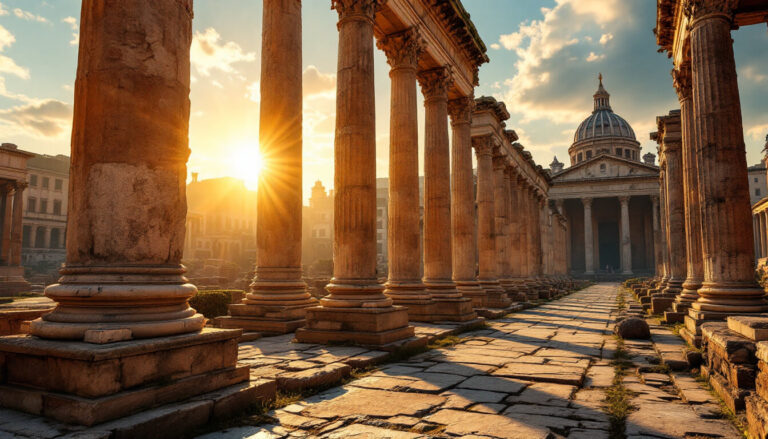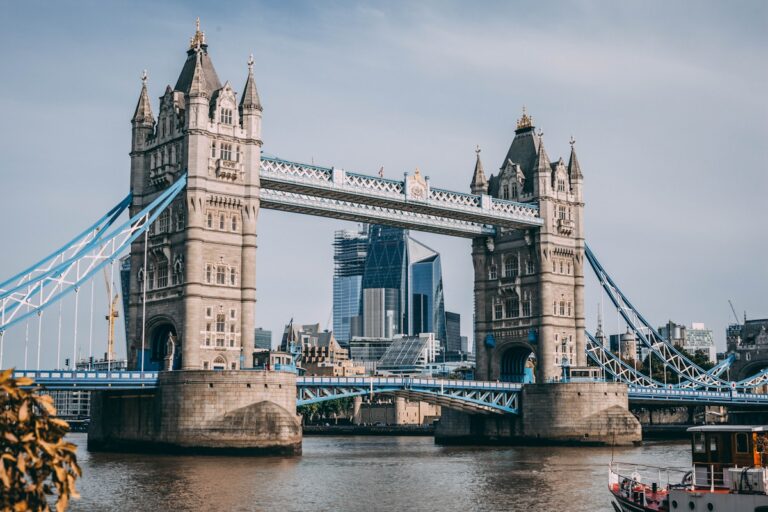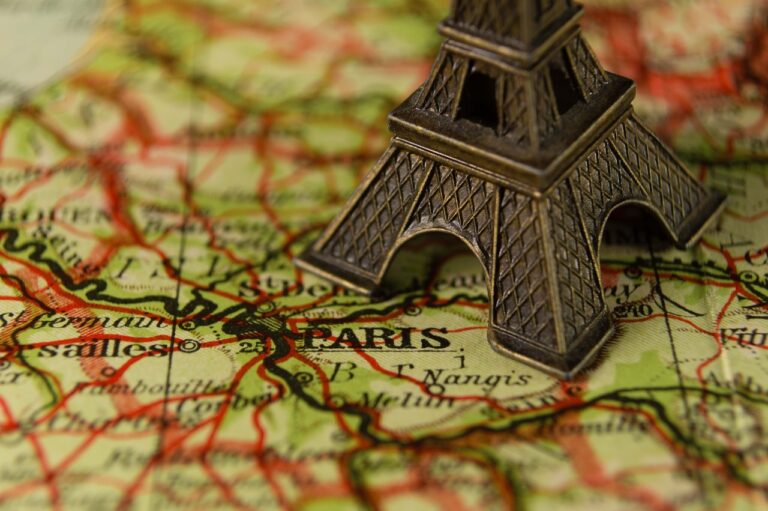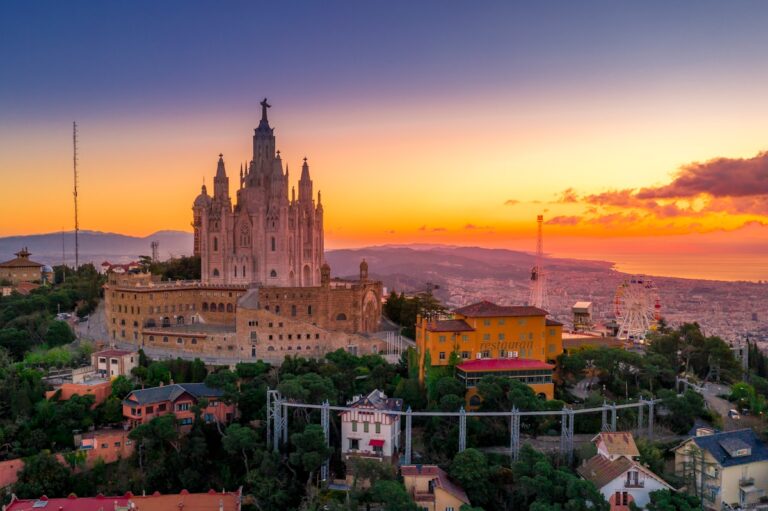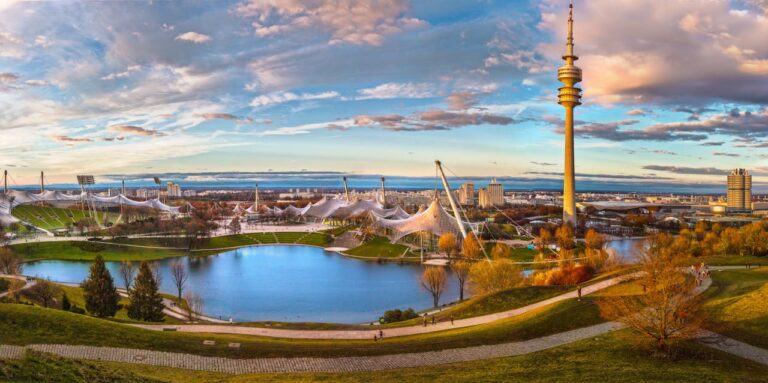19 Best Places to Visit in Rome
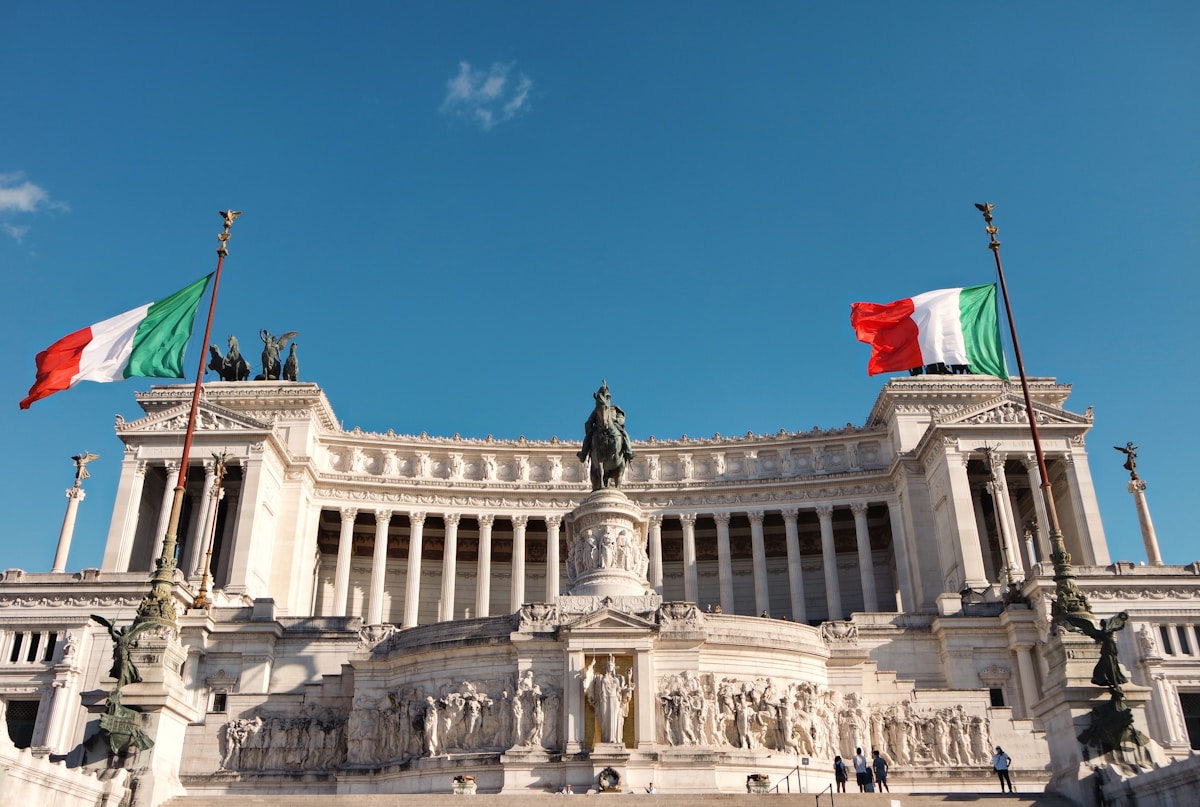
Rome stands as an eternal representation of human civilization, where ancient ruins and Renaissance masterpieces coexist with modern Italian life.
- 19 Things to See in Rome: Exploring Rome's Iconic Landmarks and Historic Sites
- Vatican City: Rome Sightseeing at the World's Smallest Country
- Ancient Wonders and Architectural Marvels
- Rome's Fountains and Piazzas: Must-See Spots for Sightseeing in Rome
- Hidden Gems and Lesser-Known Places in Rome
- Day Trips and Surrounding Places to Visit in Rome Italy
- Best Places to Go in Rome for Food and Shopping
- Tips for Planning Rome Sightseeing and Tours in Rome Italy
- So What to See in Rome for Your Next Trip?
The city presents visitors with an overwhelming array of historical landmarks, artistic treasures, and cultural experiences that span millennia.
From the towering columns of the Forum to the quiet corners of Trastevere’s cobblestone streets, each district reveals another layer of Rome’s complex identity.
Understanding where to begin this journey through time becomes essential for any meaningful exploration of the Eternal City.
TL;DR
Hide- The Colosseum stands as Rome's most iconic landmark, offering visitors a glimpse into ancient gladiatorial history with its massive amphitheater structure.
- St. Peter's Basilica in Vatican City showcases Renaissance masterpieces, including Michelangelo's dome and the vast St. Peter's Square.
- The Roman Forum presents ancient Rome's political and social center, featuring well-preserved ruins of government buildings and temples.
- The Pantheon impresses with the world's largest unreinforced concrete dome and unique architectural design dating back to ancient Rome.
- The Trevi Fountain captivates visitors with its Baroque design and famous coin-tossing tradition, best visited during early morning hours.
19 Things to See in Rome: Exploring Rome’s Iconic Landmarks and Historic Sites

Rome’s ancient heart beats strongest in its triumvirate of iconic landmarks: the mighty Colosseum, where gladiators once battled before roaring crowds; the sprawling Roman Forum, where senators debated and emperors processed through streets now lined with magnificent ruins; and the storied Palatine Hill, birthplace of the eternal city itself.
These interconnected sites transport visitors through millennia of history, from republican governance to imperial grandeur, each stone and column telling tales of Rome’s ascension as a world power.
From the Palatine’s elevated vantage point, modern travelers can gaze across the archaeological park below while imagining the splendor of ancient Rome, when marble temples gleamed and victory parades wound through the Forum’s sacred way.
Colosseum: One of the Most Famous Landmarks in Rome
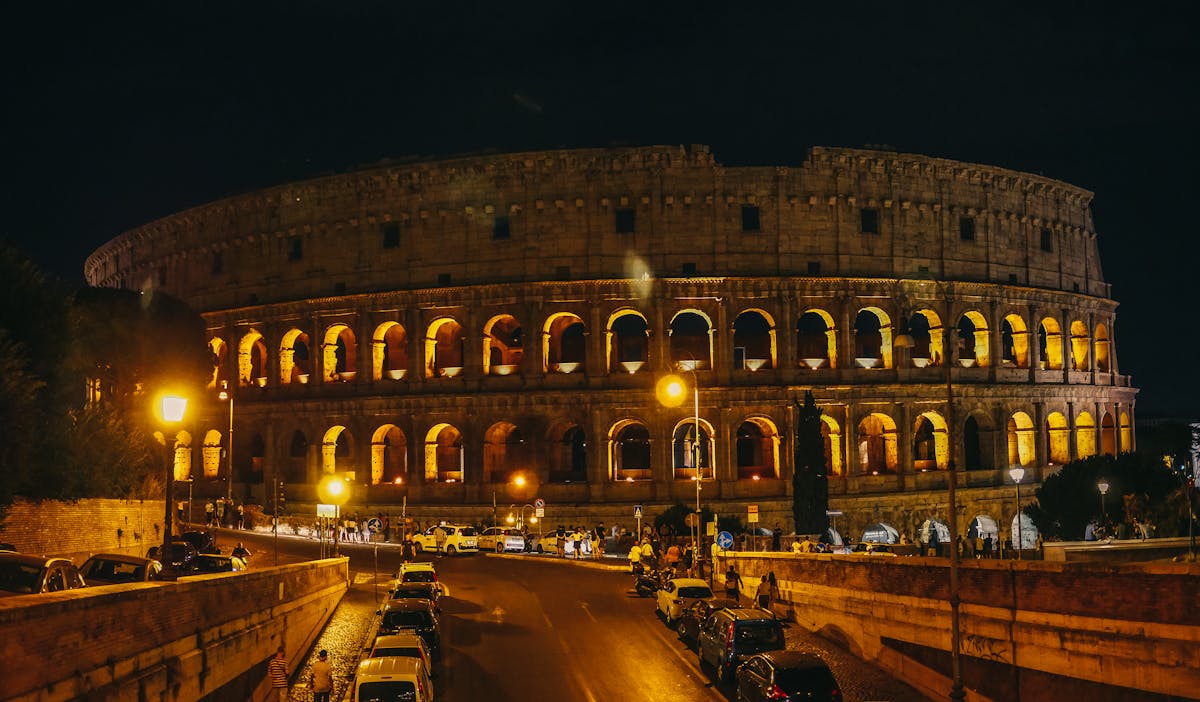
The Colosseum stands as Ancient Rome’s most enduring symbol, where gladiators once battled for glory before crowds of up to 50,000 spectators in this majestic amphitheater built in 80 AD.
Today, visitors can explore the massive arena’s three tiers, underground chambers, and archaeological exhibits that bring its dramatic history to life through expert-guided tours and skip-the-line access options.
The key to a memorable Colosseum experience lies in booking tickets well in advance, particularly during peak season from June to August, when early morning or late afternoon visits offer the most comfortable conditions for exploring this archaeological wonder.
Visiting the best places to visit in Rome like Colosseum is one of the best things to do in Rome.
History of the Colosseum and Its Gladiator Battles
Standing as an enduring symbol of ancient Roman engineering and entertainment, Flavian Amphitheatre – now known as the Colosseum – began its storied history in 72 AD under Emperor Vespasian’s ambitious vision.
This iconic Rome landmark hosted fierce gladiatorial contests, drawing up to 50,000 spectators who witnessed warriors, exotic animals, and elaborate spectacles.
Among Rome tourist attractions, it remains a monument to the empire’s grandeur.
Tips for Visiting and Booking Tours in Rome Italy
Visiting this magnificent ancient arena demands strategic planning to maximize the experience and minimize common tourist pitfalls.
Savvy travelers exploring places to visit in Rome Italy should book tours in Rome Italy well in advance, particularly during peak seasons.
For ideal rome sightseeing, early morning or late afternoon slots offer smaller crowds.
Must-see in Rome attractions, including enhanced sightseeing in Rome experiences, often feature skip-the-line privileges.
Roman Forum: A Must-See in Rome for History Lovers
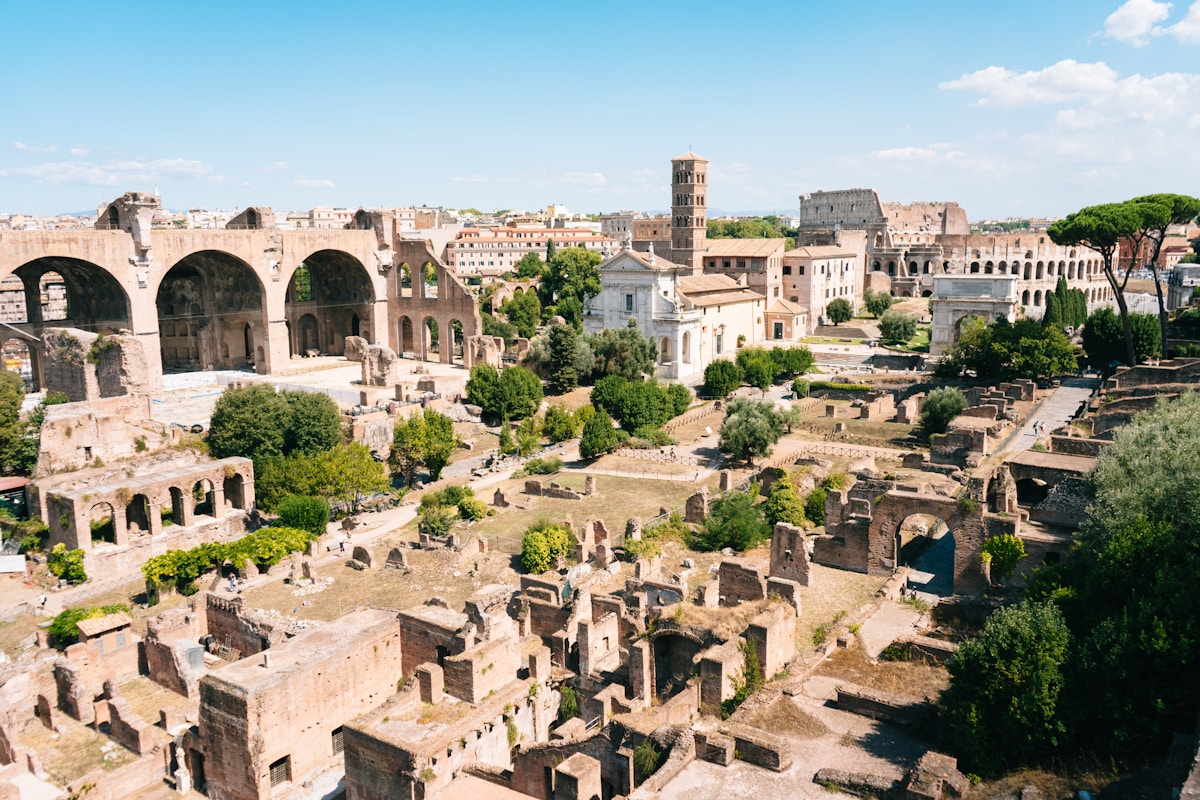
The Roman Forum stands as a magnificent monument to the heart of ancient Rome‘s political, religious, and social life, where weathered ruins whisper tales of emperors, senators, and citizens who once walked these storied paths.
Visitors can wander through the remnants of the Senate House where ancient laws were debated, marvel at the towering columns of various temples dedicated to Roman deities, and pass under triumphant arches that commemorated military victories.
This sprawling archaeological complex offers an unparalleled window into daily Roman life, with each stone and artifact revealing layers of history spanning more than a millennium.
Walking Through Ancient Ruins of Political and Social Life
Once a bustling epicenter of Roman civilization, the Roman Forum invites visitors to step back in time and explore the sprawling ruins of political debates, religious ceremonies, and daily commerce.
Among the most famous places in Rome, these ancient stones tell tales of senators debating laws, merchants trading goods, and citizens gathering near temples.
The Forum remains one of the essential places to visit in Rome.
Key Sites Within the Forum: Senate House, Temples, and Arches
Within the Forum’s hallowed grounds, several monumental structures stand as enduring witnesses to Rome’s golden age.
Among the best things to see in Rome, visitors encounter the majestic Curia Julia, where senators once debated empire-shaping decisions.
The Temple of Saturn and Temple of Vesta rank among the top things to see in Rome, while triumphant arches like Titus and Septimius Severus immortalize ancient victories.
Palatine Hill: One of the Best Places to Visit in Rome for Scenic Views
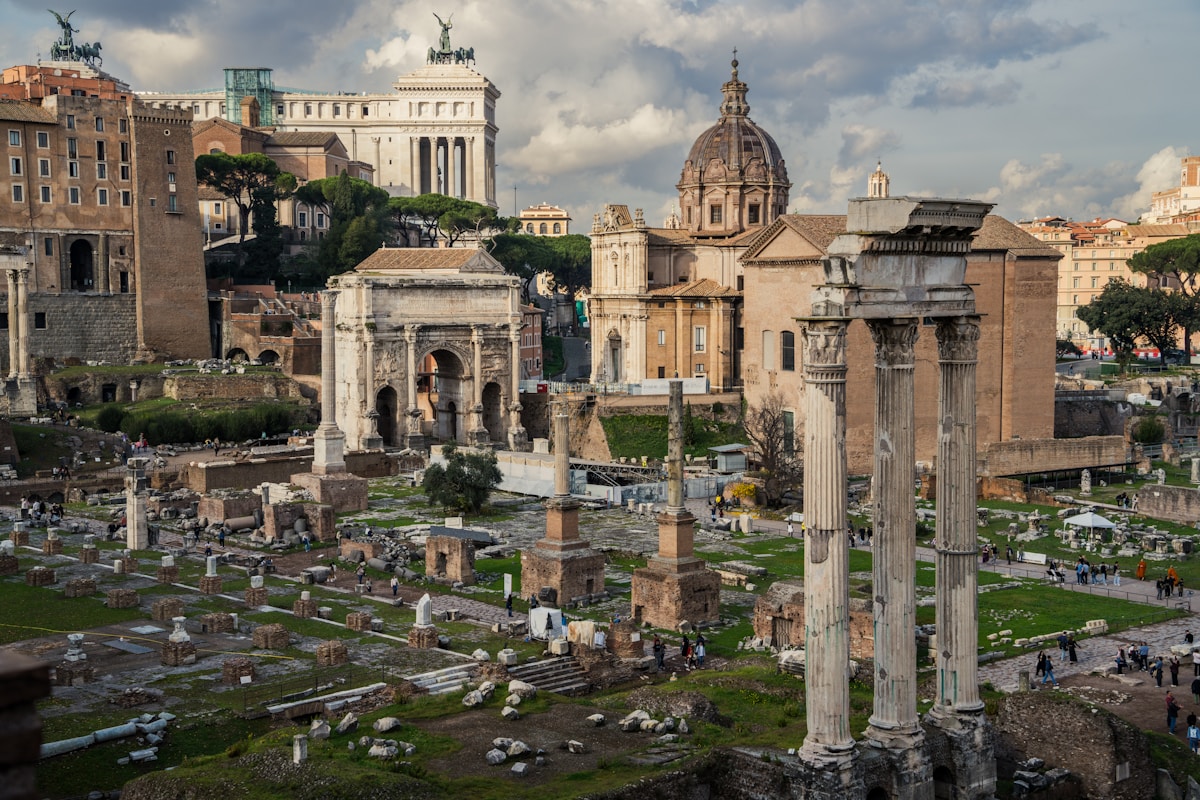
The Palatine Hill stands as the legendary birthplace of Rome, where Romulus and Remus were said to have been found by the she-wolf who nursed them to life.
Ancient emperors and aristocrats chose this prestigious location for their luxurious residences, transforming the hill into an exclusive neighborhood of elaborate palaces and best gardens in Rome.
From its elevated position, visitors can now marvel at sweeping panoramic views of the Roman Forum below and the remnants of Circus Maximus, offering a stunning perspective of Rome’s ancient heart.
Exploring the Legendary Birthplace of Rome
Standing majestically atop one of Rome’s seven hills, Palatine Hill reigns as the legendary birthplace of the Eternal City.
According to ancient mythology, this storied ground witnessed Romulus and Remus’s fabled beginnings, where a she-wolf nurtured Rome’s future founders.
The hill later became home to emperors and aristocrats, their lavish palaces and gardens embodying the grandeur of ancient Roman civilization.
Overlooking the Forum and Circus Maximus
Perched at an ideal vantage point, Palatine Hill offers visitors breathtaking panoramic views of Rome’s most iconic ancient sites.
From this elevated position, history unfolds as the eye sweeps across the magnificent Roman Forum and the sprawling ruins of Circus Maximus.
This prestigious location, once home to emperors and aristocrats, provides an unmatched perspective of the eternal city’s archaeological heart.
Vatican City: Rome Sightseeing at the World’s Smallest Country
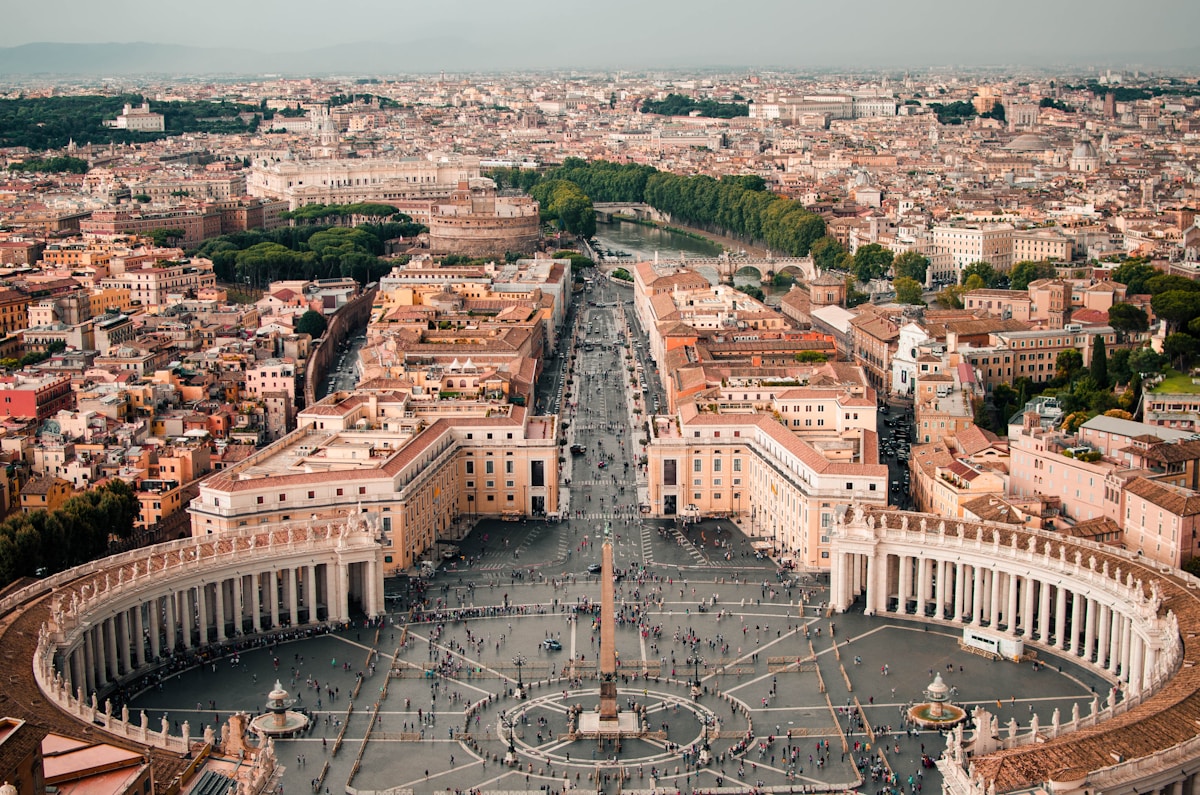
Vatican City stands as a sovereign nation and spiritual epicenter within Rome’s heart, where St. Peter’s Basilica towers above pilgrims and art enthusiasts alike with its magnificent Renaissance dome and sacred significance.
The Sistine Chapel draws visitors from around the globe to witness Michelangelo’s transcendent frescoes, including the iconic Creation of Adam that has captivated audiences for centuries.
St. Peter’s Square, designed by Bernini, embraces visitors with its sweeping colonnades and central obelisk, serving as both a gathering place for papal audiences and a demonstration of the Catholic Church’s enduring influence.
St. Peter’s Basilica: One of the Top Things to See in Rome
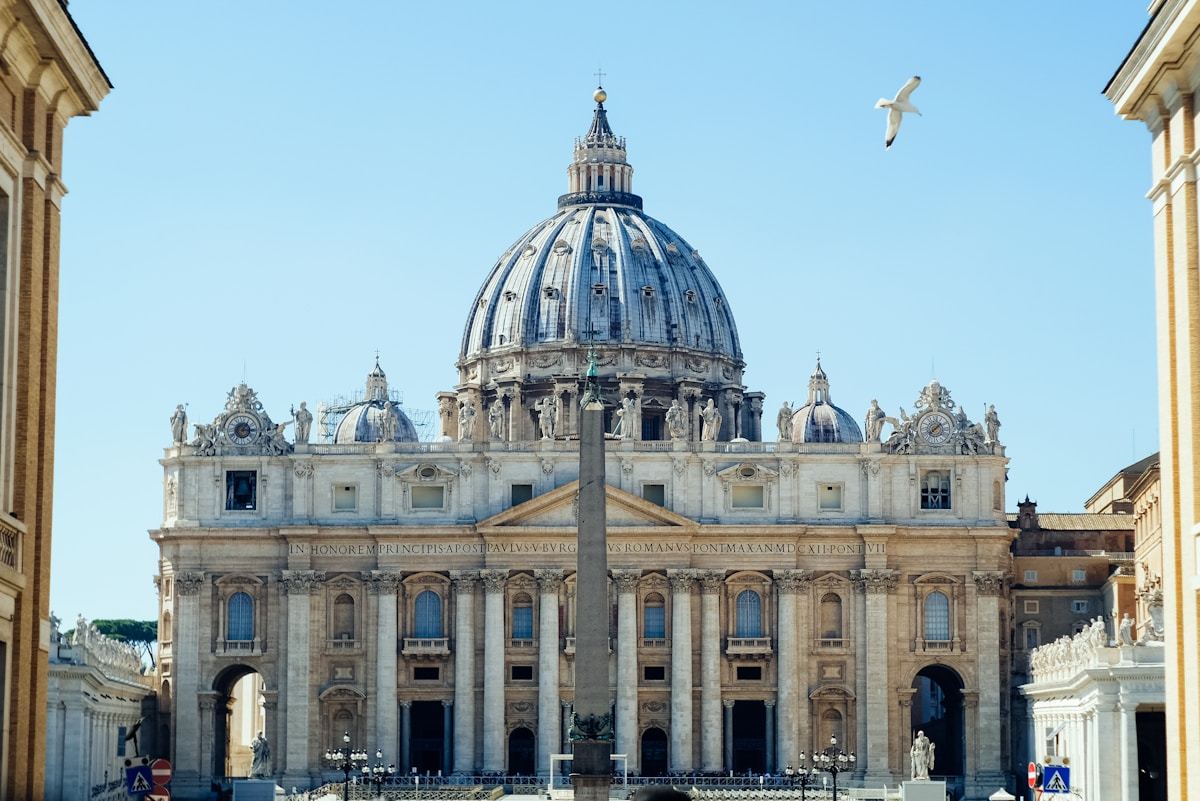
Michelangelo’s magnificent dome crowns St. Peter’s Basilica, creating an awe-inspiring focal point that draws visitors’ eyes heavenward through the ornate interior.
The basilica’s vast nave showcases masterful Renaissance artistry, including Michelangelo’s touching Pietà and Bernini’s elaborate bronze baldachin.
For those willing to ascend 551 steps, the dome’s observation deck offers breathtaking panoramic views of Vatican City and Rome’s historic skyline.
Admiring Michelangelo’s Dome and the Stunning Interior
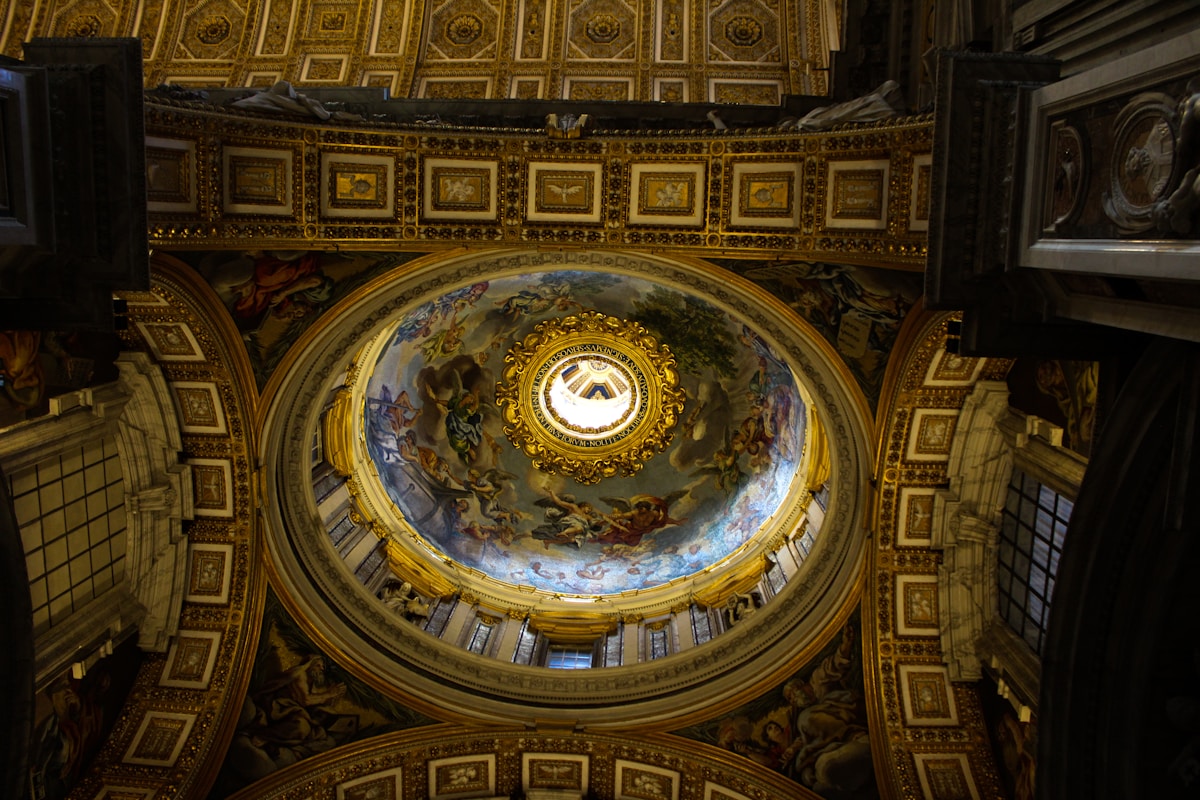
When visitors step inside St. Peter’s Basilica, Michelangelo’s magnificent dome soars 448 feet above, dominating the vast interior.
The Renaissance masterpiece floods the basilica with natural light through its 16 windows.
Ornate marble, gilded accents, and stunning mosaics adorn every surface, while Michelangelo’s Pietà draws crowds to its chapel, protected behind bulletproof glass since 1972.
Climbing to the Dome for Panoramic Views of Rome
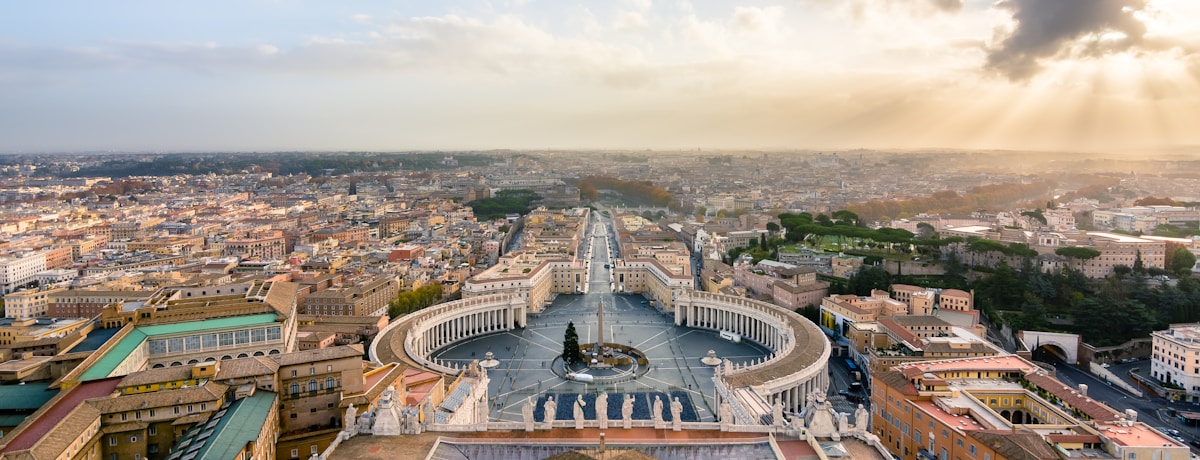
Ascending to the top of St. Peter’s Basilica dome offers intrepid visitors Rome’s most spectacular panoramic views.
The 551-step journey includes both elevator and stair options, leading past the dome’s intricate mosaics and architectural details.
At the summit, travelers gaze across the Vatican Gardens, spot ancient ruins, and witness the Eternal City’s terracotta rooftops stretching to the distant hills.
Sistine Chapel: Famous Places in Rome for Art and Culture
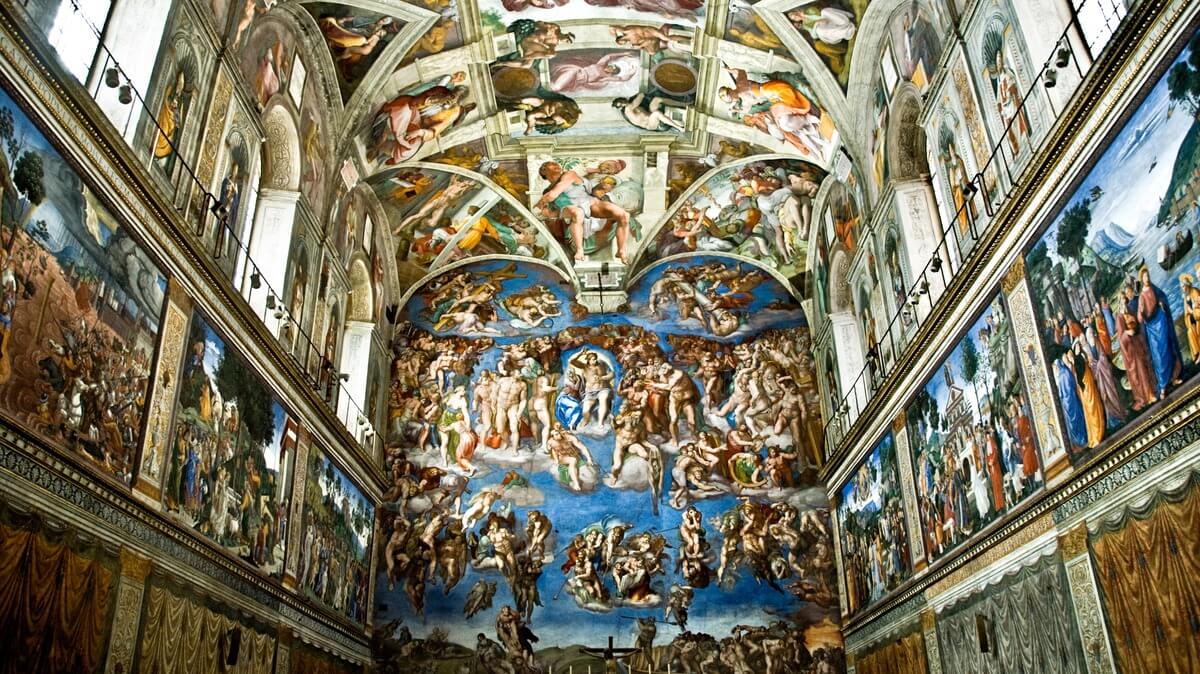
The Sistine Chapel stands as one of humanity’s supreme artistic achievements, where Michelangelo’s legendary frescoed ceiling depicts biblical scenes in vivid detail and masterful technique.
Before reaching this crowning jewel, visitors wind through the Vatican Museums‘ vast corridors housing priceless sculptures, tapestries, and paintings amassed by popes throughout the centuries.
The chapel’s immersive experience culminates in Michelangelo’s powerful “Last Judgment” on the altar wall, compelling viewers to crane their necks skyward in awe of the Renaissance master’s four-year labor that forever transformed sacred art.
Experiencing Michelangelo’s Masterpiece on the Ceiling
Masterful brushstrokes spanning nearly 12,000 square feet of ceiling tell humanity’s greatest stories through Michelangelo’s transcendent vision in the Sistine Chapel.
Renaissance artistry reaches its pinnacle in this sacred space, where biblical narratives unfold in vivid frescoes that have captivated visitors for centuries.
- The Creation of Adam forms the chapel’s iconic centerpiece, depicting divine spark
- Nine scenes from Genesis illuminate mankind’s origins
- Bold colors and dynamic figures demonstrate Michelangelo’s revolutionary technique
Visiting the Vatican Museums and Its Extensive Collections
Beyond the Sistine Chapel’s splendor lies an expansive labyrinth of artistic treasures within Vatican Museums’ 54 galleries.
From Egyptian mummies to contemporary religious art, visitors traverse centuries of human creativity. The museums house masterpieces like the Apollo Belvedere, Raphael’s School of Athens, and the iconic spiral Bramante Staircase.
Each corridor reveals new wonders of artistic and historical significance. Also read our post about the best museums in Rome.
St. Peter’s Square: Rome Tourist Attractions with Religious Significance
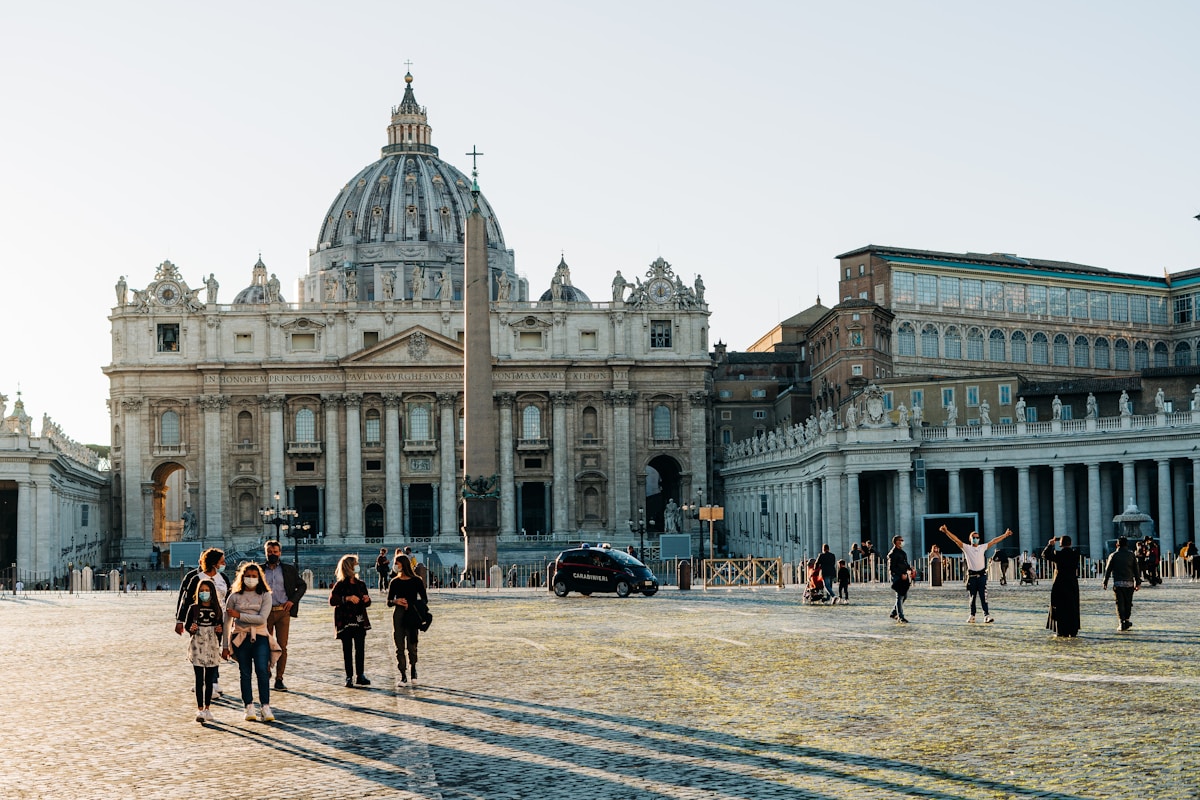
The iconic St. Peter’s Square, masterfully designed by Gian Lorenzo Bernini in the 17th century, welcomes pilgrims and visitors with its sweeping colonnades that symbolically embrace them like the arms of the Catholic Church.
Crowds gather in reverent anticipation as the Pope delivers his blessing from the window of the Apostolic Palace during special occasions like Easter Sunday and Christmas Day.
The massive piazza, adorned with an ancient Egyptian obelisk at its center and flanked by two stunning fountains, serves as both a spiritual gathering place and an architectural marvel that exemplifies the grandeur of Vatican City.
Walking Through the Massive Square Designed by Bernini
Standing as one of humanity’s grandest architectural achievements, St. Peter’s Square embraces visitors with Bernini’s magnificent colonnaded arms.
This vast elliptical plaza, designed in the 17th century, creates an enchanting theatrical space where faith and architectural brilliance converge.
- 284 towering columns form a sweeping colonnade, symbolizing the Church’s embrace
- Two fountains and an ancient Egyptian obelisk mark cardinal points
- Stone markers in the pavement reveal the perfect alignment of Bernini’s columns
Witnessing the Pope’s Blessing on Special Occasions
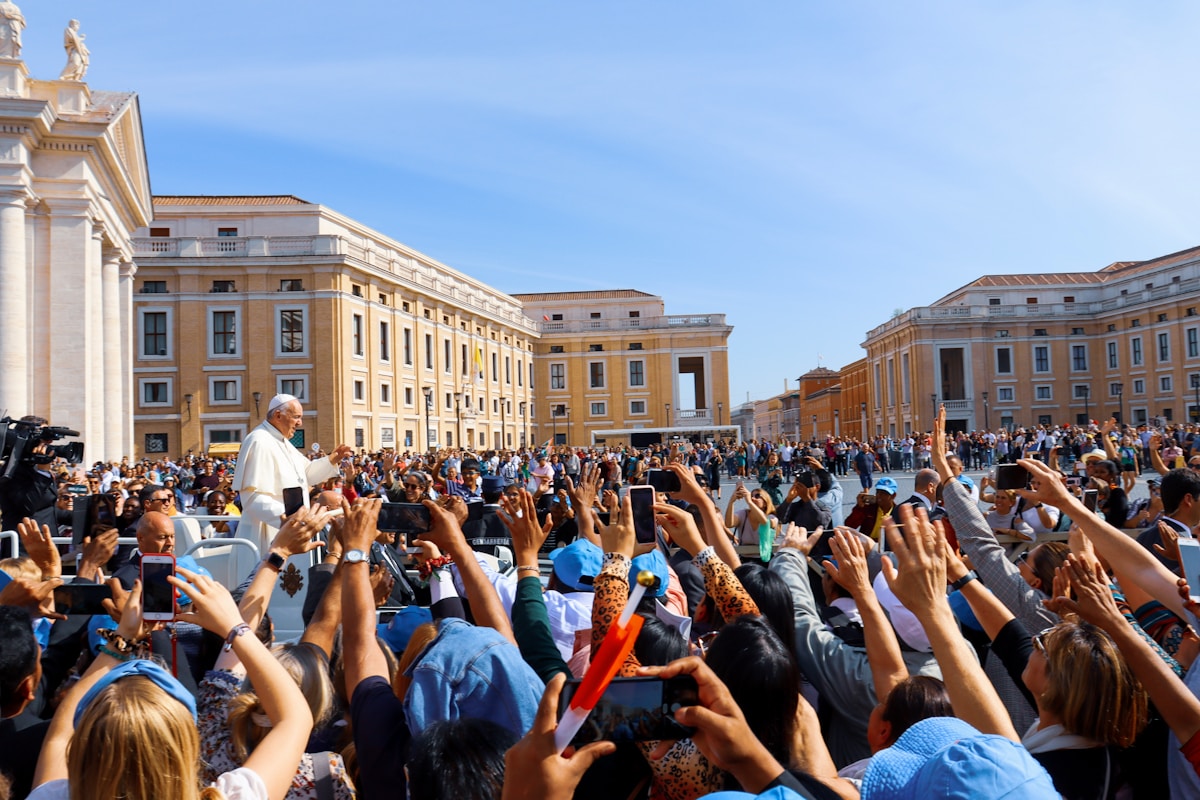
During special occasions throughout the liturgical year, thousands of pilgrims and visitors gather in St. Peter’s Square to receive the Pope’s blessing.
Most importantly, on Easter Sunday and Christmas Day, the Pope delivers the “Urbi et Orbi” blessing from the central balcony of St. Peter’s Basilica, offering a moment of profound spiritual significance that transcends religious boundaries.
Ancient Wonders and Architectural Marvels
Rome’s architectural legacy spans millennia, from the perfectly preserved Pantheon with its engineering marvel of a dome to the theatrical Baroque fountains of Piazza Navona.
The Pantheon’s oculus casts ever-changing patterns of light across ancient marble floors, while Piazza Navona’s Fountain of the Four Rivers creates a dramatic centerpiece amid elegant cafes and street artists.
Standing guard over the Tiber River, the cylindrical Castel Sant’Angelo evolved from Emperor Hadrian’s mausoleum into a papal fortress, offering panoramic views of the Eternal City from its ramparts.
Pantheon: One of the Best Things to See in Rome
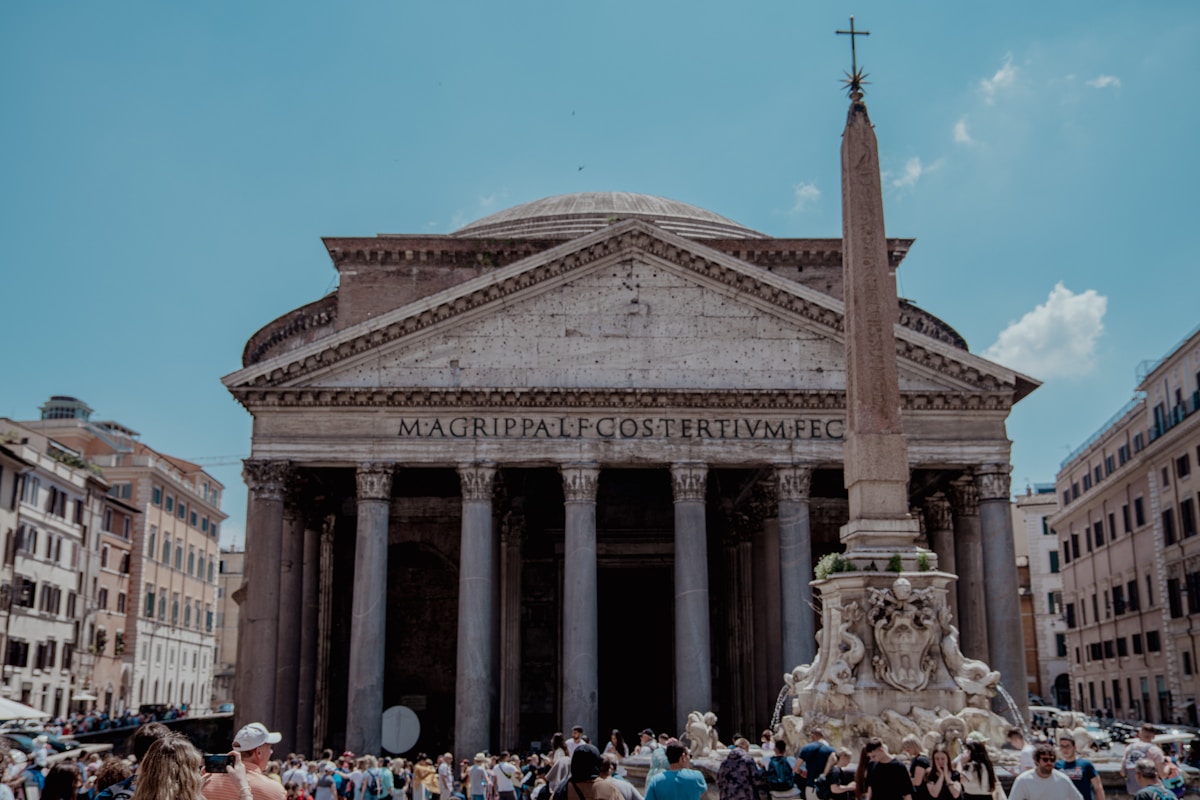
The Pantheon’s engineering prowess stands as a demonstration of Roman ingenuity, featuring the world’s largest unreinforced concrete dome that has endured for nearly two millennia.
At its apex, the 27-foot-wide oculus creates a dramatic interplay between architecture and nature, allowing sunlight, rain, and occasionally snow to enter the sacred space.
The otherworldly shaft of light streaming through this celestial eye moves across the interior like a sundial throughout the day, creating an ever-changing display that transforms the temple’s classical marble surfaces into a living canvas.
Understanding the Engineering of This Ancient Temple
Built nearly two millennia ago, ancient Rome’s Pantheon stands as a masterpiece of engineering innovation that continues to astound modern architects and engineers.
Its revolutionary design features a perfect spherical dome resting on a cylindrical base, demonstrating the Romans’ exceptional understanding of geometry, physics, and construction techniques.
- The iconic oculus, a 27-foot opening at the dome’s apex, creates dramatic light effects
- Precise mathematical ratios maintain perfect structural balance
- Advanced Roman concrete mixture grows stronger with age, defying time
The Open Oculus and Its Stunning Light Display
Standing as nature’s own spotlight within this ancient marvel, the Pantheon’s magnificent oculus draws visitors’ eyes upward to witness one of architecture’s most spellbinding displays.
The 27-foot opening bathes the rotunda in ever-shifting natural light, creating an ethereal dance as sunbeams sweep across ancient marble and stone.
This remarkable feat of Roman engineering connects earthbound visitors with the infinite sky above.
Piazza Navona: A Must-See in Rome for Baroque Beauty
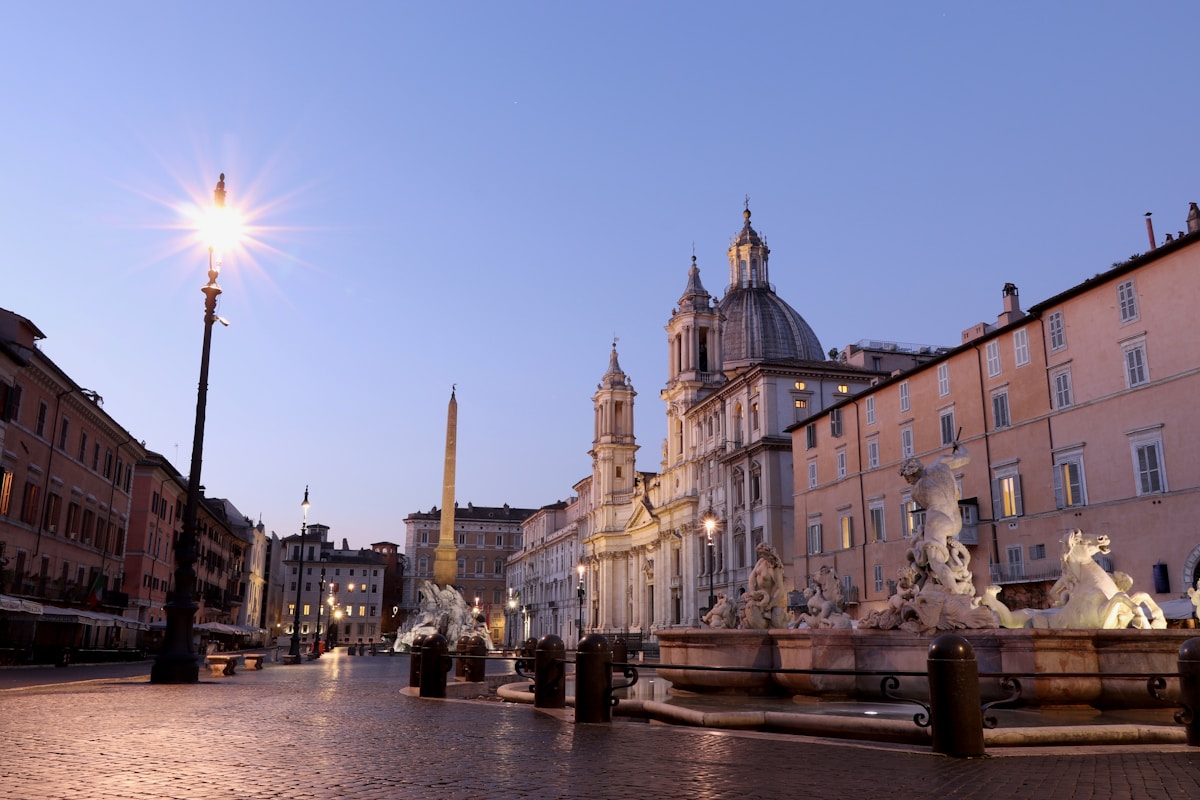
The majestic Piazza Navona stands as Rome’s premier showcase of Baroque architecture, anchored by Bernini’s masterful Fountain of the Four Rivers at its heart.
Built atop an ancient Roman stadium, this elegant square pulses with life as artists sketch portraits, musicians perform, and visitors gather at outdoor cafés beneath ornate palace façades.
The harmonious blend of three magnificent fountains, the imposing Sant’Agnese in Agone church, and the constant flow of Roman life creates an enchanting open-air theater that captures the essence of the Eternal City.
Admiring Bernini’s Fountains and Historical Architecture
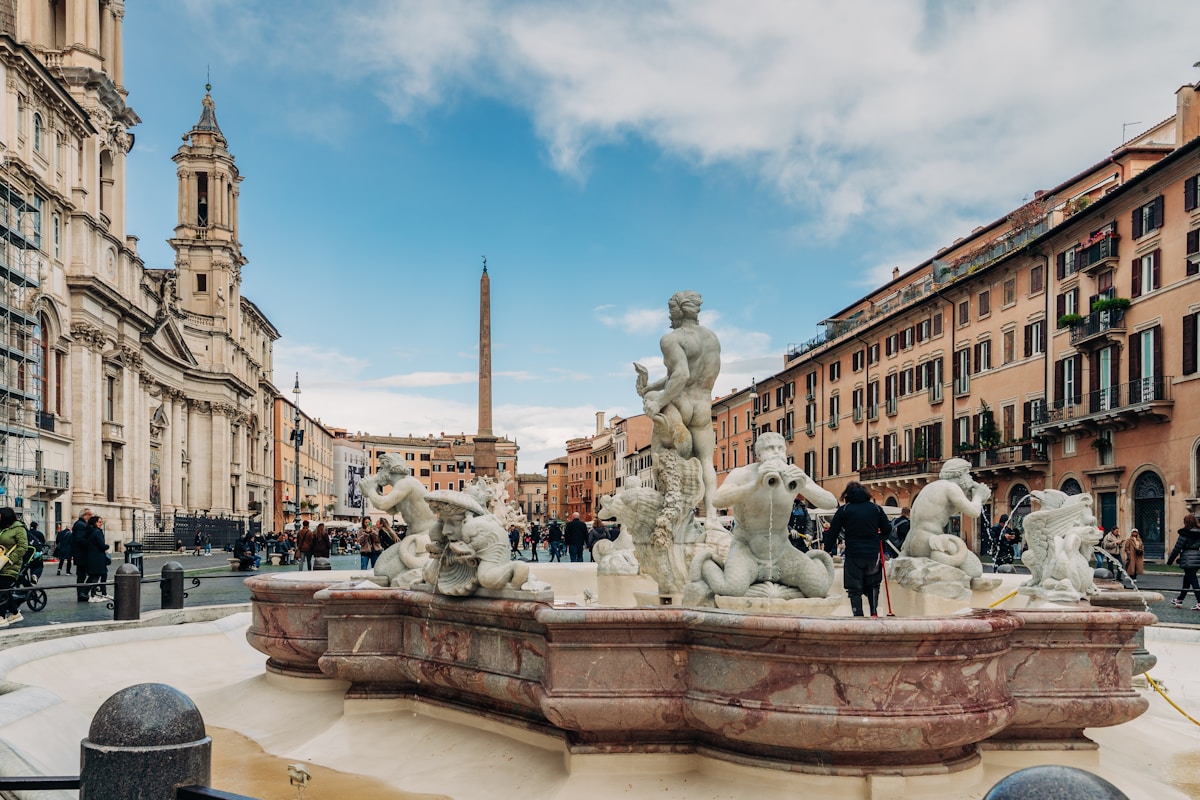
Perhaps Rome’s most enchanting public square, Piazza Navona showcases the pinnacle of Baroque artistry through its magnificent fountains and architectural splendor.
At its heart stands Bernini’s masterpiece, the Fountain of the Four Rivers, a tribute to artistic freedom and innovation.
- The Fountain of the Four Rivers depicts four river gods representing major continents
- Bernini’s Fountain of the Moor features a muscular figure wrestling a dolphin
- The Neptune Fountain completes the trio with its dynamic sea-themed sculptures
Cafés, Street Performers, and a Lively Atmosphere
Beyond its stunning Baroque architecture, Piazza Navona pulses with modern Roman life through its lively café culture and street entertainment.
Artists sketch portraits while musicians fill the air with melodies. Visitors can sip espresso at charming sidewalk cafés, savor gelato, or simply people-watch as locals and tourists alike contribute to the square’s dynamic atmosphere throughout the day and into the evening.
Castel Sant’Angelo: A Famous Landmark in Rome Overlooking the Tiber
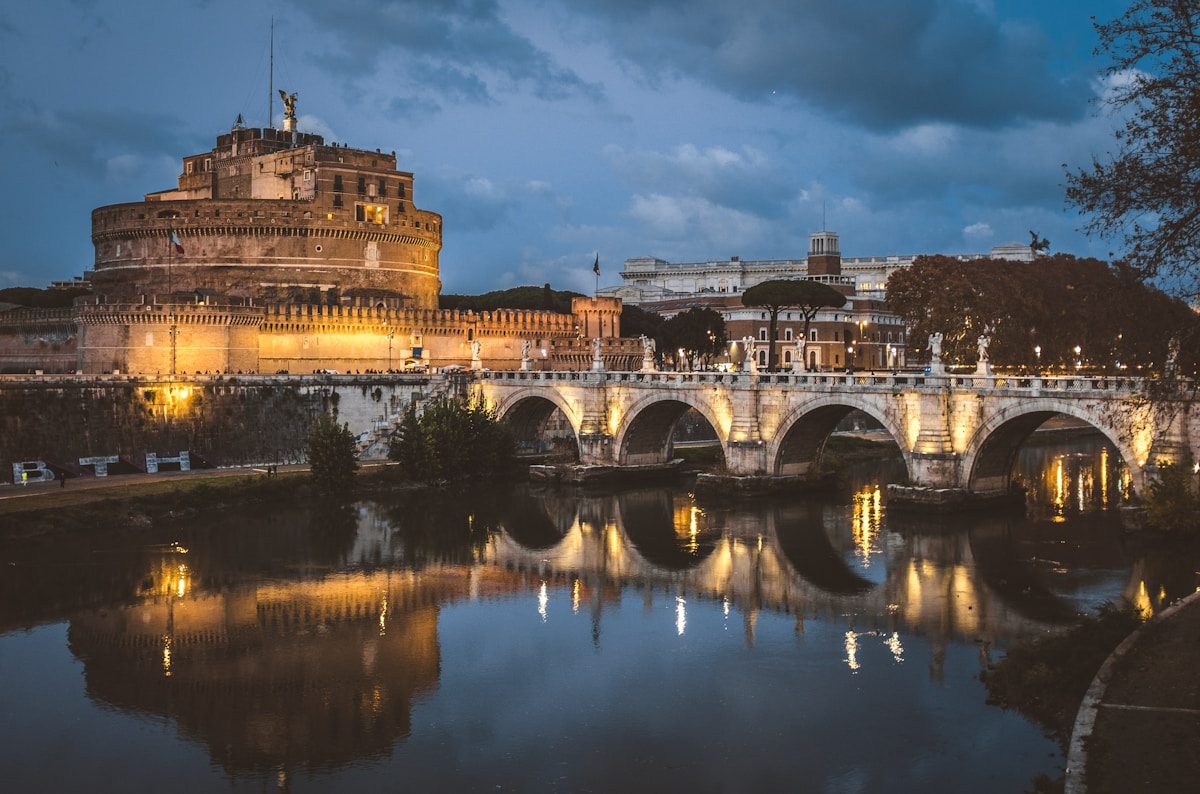
Originally built as Emperor Hadrian’s mausoleum in the 2nd century AD, Castel Sant’Angelo evolved into a formidable fortress that protected popes during times of danger, connected to the Vatican by a secret elevated passageway.
The cylindrical structure, crowned with the statue of Archangel Michael, houses a fascinating museum that chronicles Rome’s history through ancient artifacts, Renaissance frescoes, and papal apartments.
From its panoramic terrace, visitors can admire breathtaking views of St. Peter’s Basilica, the Tiber River, and Rome’s historic skyline dotted with countless domes and bell towers.
The Former Mausoleum Turned Fortress and Museum
Standing majestically on the right bank of the Tiber River, Castel Sant’Angelo embodies Rome’s transformation across millennia.
Originally Emperor Hadrian’s mausoleum, it evolved into a papal fortress, prison, and now serves as a fascinating museum chronicling Rome’s rich history through its architecture and artifacts.
- Secret passageway connecting to Vatican City, used by popes seeking refuge
- Spiraling ramps leading to panoramic views of Rome’s skyline
- Renaissance-era papal apartments adorned with stunning frescoes
Rooftop Views of the Vatican and the City
The terrace atop Castel Sant’Angelo offers one of Rome’s most breathtaking panoramic viewpoints, where visitors can gaze across the eternal city’s tapestry of domes, spires, and ancient ruins.
From this elevated perch, St. Peter’s Basilica dominates the western view, while the Tiber River winds like a ribbon through the urban landscape.
The Angel Bridge below creates a stunning foreground to this majestic Roman vista.
Rome’s Fountains and Piazzas: Must-See Spots for Sightseeing in Rome
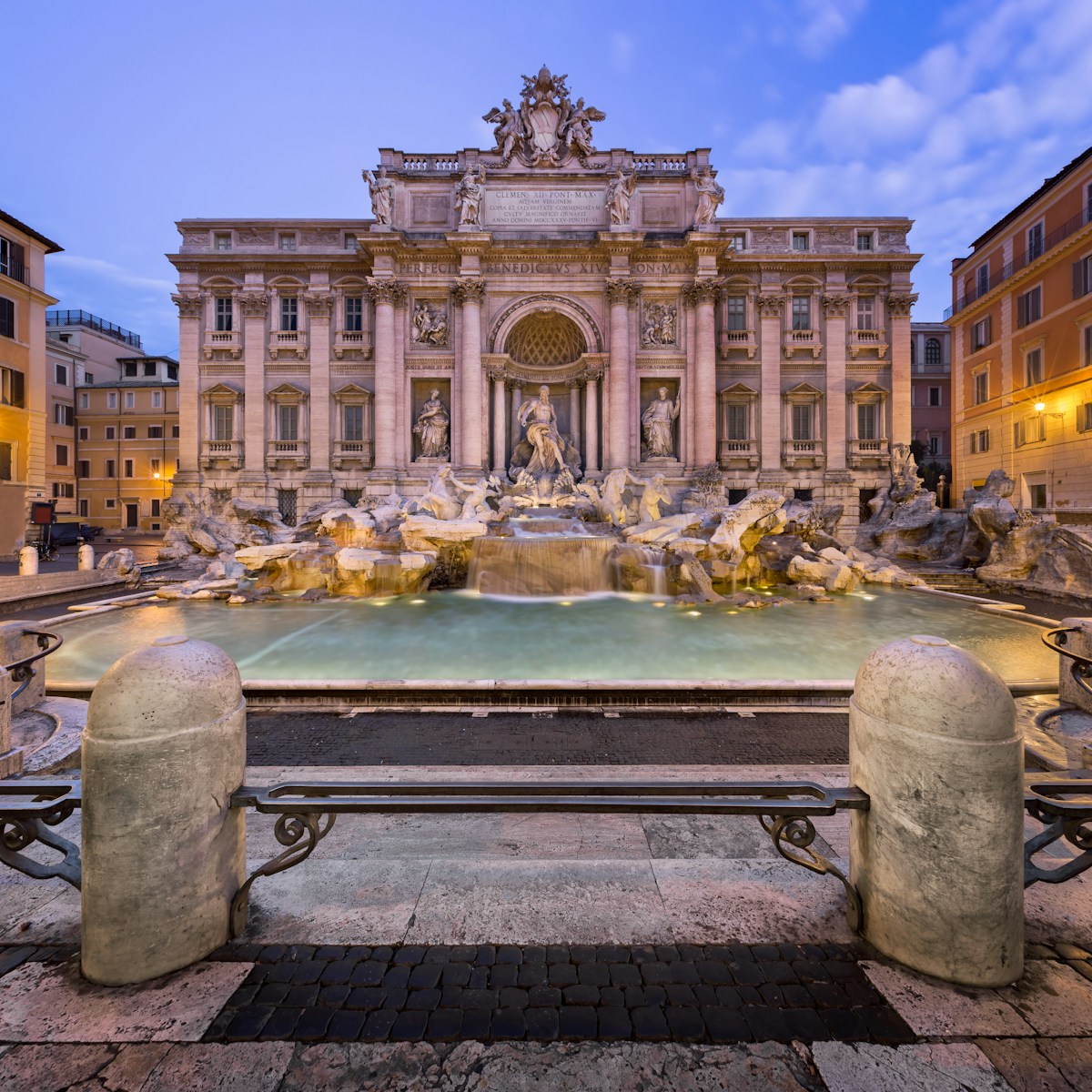
Rome’s majestic fountains and historic piazzas form the cultural heartbeat of the Eternal City, with the iconic Trevi Fountain drawing visitors to toss coins over their shoulders amid its baroque splendor.
The Spanish Steps cascade elegantly through the heart of Rome’s fashion district, creating a romantic gathering place where travelers rest on the travertine marble while admiring the Trinità dei Monti church above.
At the bustling crossroads of Rome stands Piazza Venezia, dominated by the magnificent white marble Vittoriano monument, serving as both a geographical center point and a symbol of Italy’s unified history.
Trevi Fountain: One of the Most Famous Places in Rome
The iconic ritual of tossing a coin over one’s shoulder into the Trevi Fountain promises a future return to Rome, with approximately €3,000 collected daily and donated to charity.
Early morning hours, particularly before 8 AM, or late evening after 10 PM, offer visitors the best opportunities to experience this Baroque masterpiece without the usual crowds.
As the sunlight shifts throughout the day, the interplay of light and shadow across the fountain’s intricate sculptures creates different moods, making each visit a unique photographic opportunity.
The Tradition of Throwing a Coin for Good Luck
Beloved by visitors for generations, tossing a coin into the Trevi Fountain has become one of Rome’s most cherished rituals.
Legend says throwing one coin guarantees a return to Rome, two coins lead to romance, and three promise marriage.
- Coins must be tossed with the right hand over the left shoulder
- Nearly €3,000 is collected daily and donated to charity
- The tradition dates back to ancient Romans offering coins to water deities
Best Times to Visit for a Less Crowded Experience
While thousands of visitors flock daily to toss their coins into the Trevi Fountain, timing a visit to this iconic landmark can make all the difference in experiencing its majestic beauty.
Early morning hours, particularly before 8 AM, or late evening after 9 PM, offer serene moments to admire the fountain’s intricate Baroque details without the typical midday crowds and summer tour groups.
Spanish Steps: One of the Top Things to See in Rome for Stunning Architecture
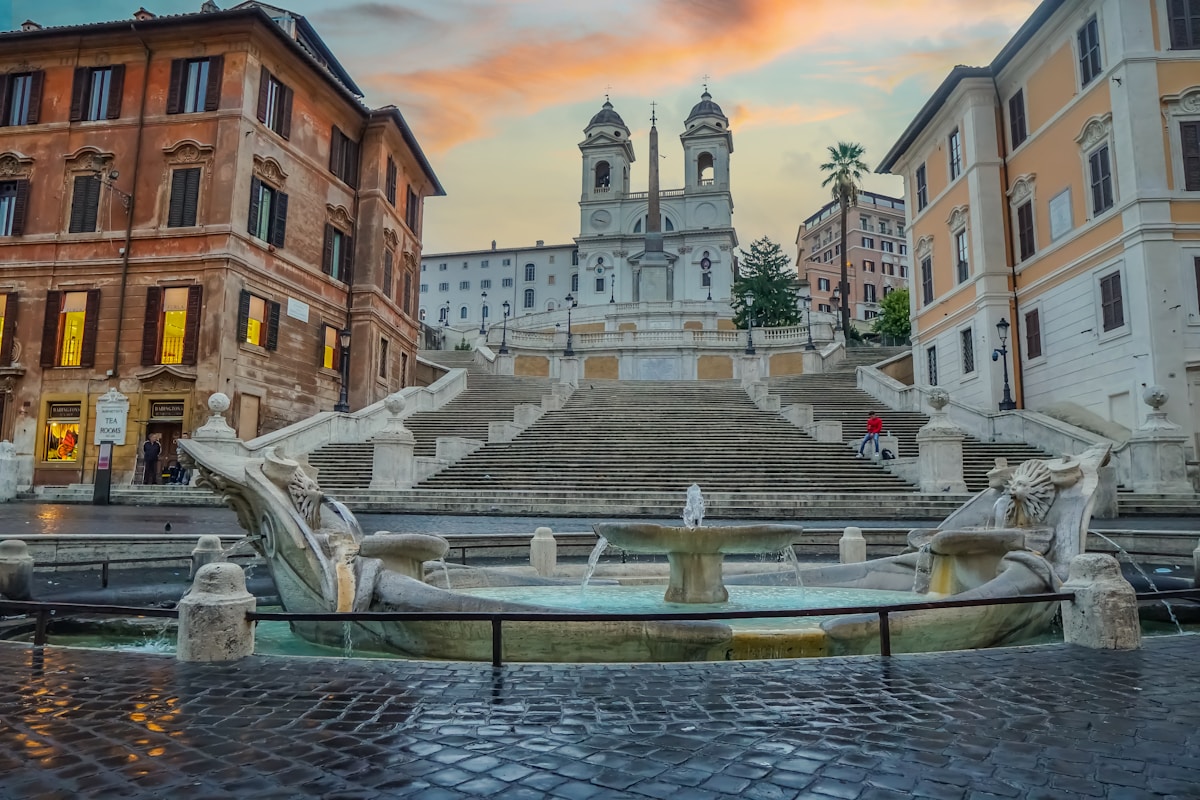
The majestic Spanish Steps, with its graceful cascade of 135 travertine marble steps, invites visitors to ascend for panoramic views over the elegant Piazza di Spagna below.
From this elevated vantage point, onlookers can admire the Baroque beauty of the Fontana della Barcaccia fountain and the fashionable boutiques that line the surrounding streets.
Literary enthusiasts can explore the Keats-Shelley House at the foot of the steps, where the Romantic poet John Keats spent his final months and which now houses a museum dedicated to English Romantic poetry.
Climbing the Steps for a View Over Piazza di Spagna
Ascending Rome’s iconic Spanish Steps rewards visitors with a breathtaking panorama of the Eternal City’s historic center.
From this elevated vantage point, the majestic Piazza di Spagna unfolds below, offering an unmatched perspective of Roman life and architecture.
- Trinità dei Monti church’s twin bell towers frame the skyline
- The Baroque Fontana della Barcaccia fountain appears as a marble jewel below
- Sunset casts a golden glow across the sea of terracotta rooftops
Visiting the Keats-Shelley House for Literary History
Nestled at the foot of the Spanish Steps, Keats-Shelley House preserves the final dwelling place of English Romantic poet John Keats, who spent his last months gazing through its windows at the bustling Piazza di Spagna below.
Today, the museum houses an extensive collection of Romantic literature, personal artifacts, and manuscripts, offering visitors an intimate glimpse into the lives of these revolutionary poets who found inspiration in Rome.
Piazza Venezia: Rome Landmarks at the Center of the City
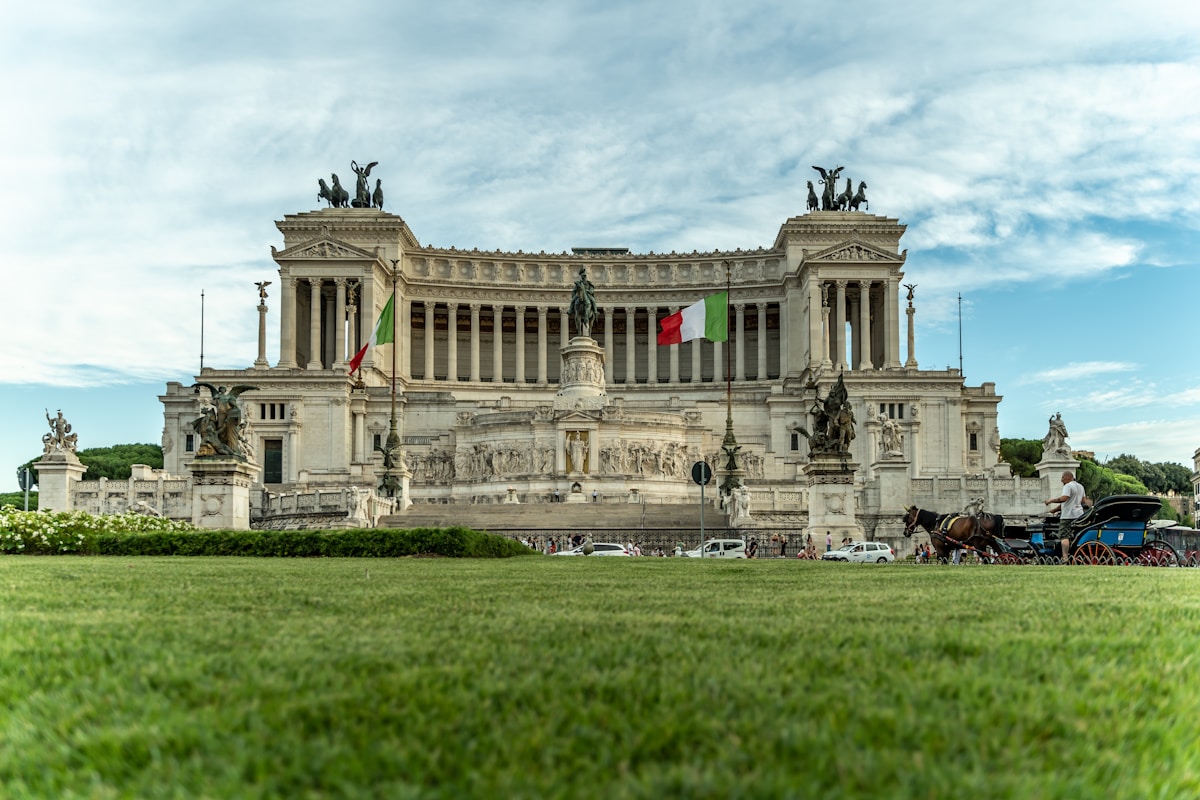
At the bustling heart of Rome stands Piazza Venezia, home to the magnificent Altare della Patria, also known as the Victor Emmanuel II Monument, which rises in gleaming white marble against the city’s ochre skyline.
The monument’s panoramic terrace offers breathtaking 360-degree views of Rome’s historic center, where visitors can spot landmarks from the Colosseum to St. Peter’s Basilica.
This grand piazza serves as a symbolic crossroads where ancient Roman ruins meet modern city life, marking the intersection of the city’s main thoroughfares and connecting major archaeological sites with contemporary Rome.
The Iconic Altare della Patria and Views from the Top
The gleaming white marble of the Altare della Patria dominates Piazza Venezia like a grand wedding cake, its ornate tiers rising dramatically against Rome’s terracotta skyline.
This monumental tribute to unified Italy offers unparalleled 360-degree views of the Eternal City from its panoramic terrace.
- Bronze chariots and winged victories crown the massive structure
- Glass elevator whisks visitors to the summit for breathtaking vistas
- Eternal flame guards the Tomb of the Unknown Soldier below
The Connection Between Ancient and Modern Rome
Standing at the bustling heart of Rome, Piazza Venezia serves as a living bridge between the city’s ancient past and lively present.
This dynamic square, where modern traffic circles ancient ruins, showcases Rome’s seamless blend of eras.
From here, visitors can trace history through radiating streets that connect landmarks spanning millennia – from the Roman Forum to Renaissance palaces and contemporary cafes.
Hidden Gems and Lesser-Known Places in Rome
Beyond Rome’s iconic landmarks lie enchanting secrets waiting to be discovered, from the cobblestone labyrinth of Trastevere with its ivy-draped buildings and authentic trattorias to the ancient Appian Way where centuries of history unfold along weathered stone paths.
The Aventine Keyhole offers an unexpected perspective, where visitors can peer through a modest keyhole to find a perfectly framed view of St. Peter’s Basilica.
These hidden treasures reveal a more intimate side of Rome, where local life flourishes away from the tourist crowds and unexpected vistas capture the eternal city’s enduring magic.
Trastevere: One of the Best Places to Visit in Rome for Local Charm
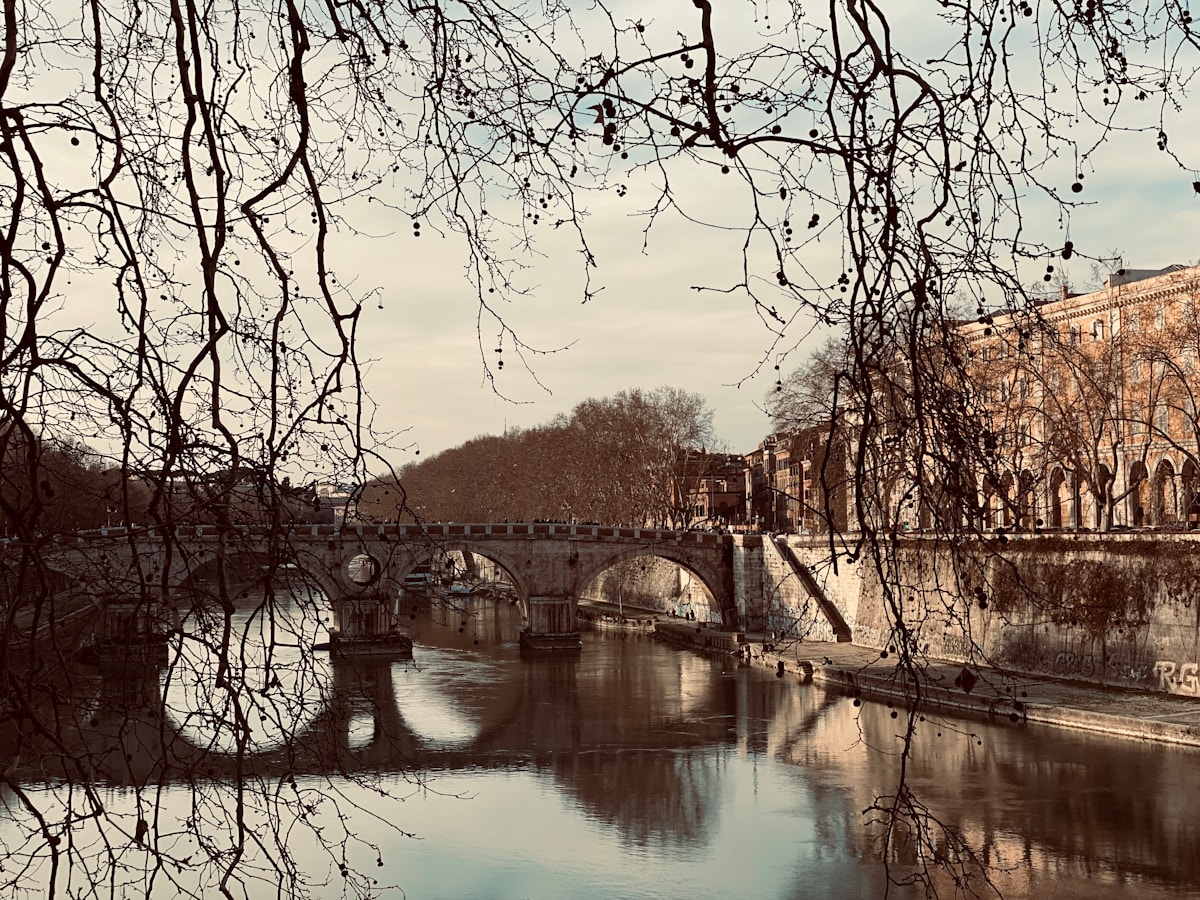
Tucked away across the Tiber River, Trastevere captivates visitors with its maze of cobblestone streets, where ivy-draped buildings and charming trattorias reveal Rome’s authentic soul.
The neighborhood pulses with local energy as residents gather in picturesque piazzas and dine at family-run establishments serving generations-old recipes.
At its heart stands the glittering Basilica of Santa Maria in Trastevere, one of Rome’s oldest churches, where golden medieval mosaics illuminate the history of this lively quarter.
Cobblestone Streets, Traditional Restaurants, and a Lively Vibe
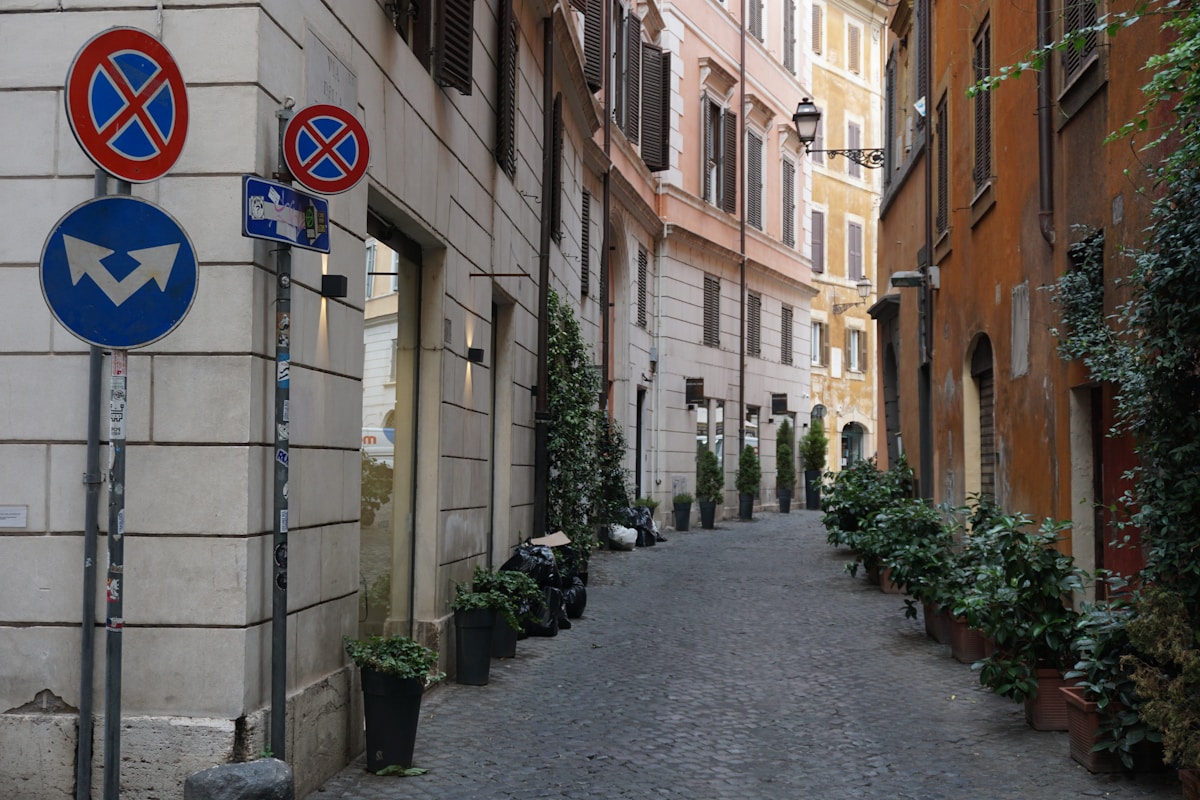
Across the Tiber River lies Trastevere, a charming neighborhood where Rome’s authentic heart still beats through its maze of narrow cobblestone streets.
Local trattorias serve generations-old recipes while the evening air fills with the sounds of street musicians and clinking wine glasses.
- Hidden courtyards adorned with flowering vines and ancient fountains
- Family-run restaurants with checkered tablecloths and handwritten menus
- Lively piazzas where locals and visitors mingle until the early hours
Visiting Basilica of Santa Maria in Trastevere

At the heart of Trastevere stands the Basilica of Santa Maria, Rome’s oldest church dedicated to the Virgin Mary and a tribute to early Christian architecture.
Its stunning 12th-century mosaics glitter beneath ancient wooden beams, while the octagonal fountain outside marks a spot where, according to legend, oil miraculously sprung from the ground on the night of Christ’s birth.
Appian Way: Rome Sightseeing on One of the Oldest Roads in the World

The ancient Appian Way, stretching like a stone ribbon through Rome’s countryside, offers visitors a rare glimpse into the engineering marvel of Roman road construction dating back to 312 BC.
Adventurous travelers can walk or cycle along the weathered basalt stones, passing ruins of Roman tombs and aqueducts while savoring views of the pastoral Campagna Romana.
The road leads to two of Rome’s most significant underground burial networks – the Catacombs of St. Callixtus and St. Sebastian – where early Christian history unfolds through a labyrinth of tunnels adorned with ancient frescoes and burial niches.
Walking or Biking Along the Ancient Roman Road
Known as the “Queen of Roads,” Via Appia Antica stretches beyond Rome’s bustling center like an ancient ribbon of history carved in stone.
Visitors can traverse this legendary path by foot or bicycle, immersing themselves in the timeless atmosphere of ancient Rome.
- Weathered stone blocks tell tales of Roman legions and merchant caravans
- Cypress trees line the route, casting dancing shadows on millennia-old pavements
- Ancient tombs and ruins emerge from wild meadows, offering countless photo opportunities
Exploring the Catacombs of St. Callixtus and St. Sebastian
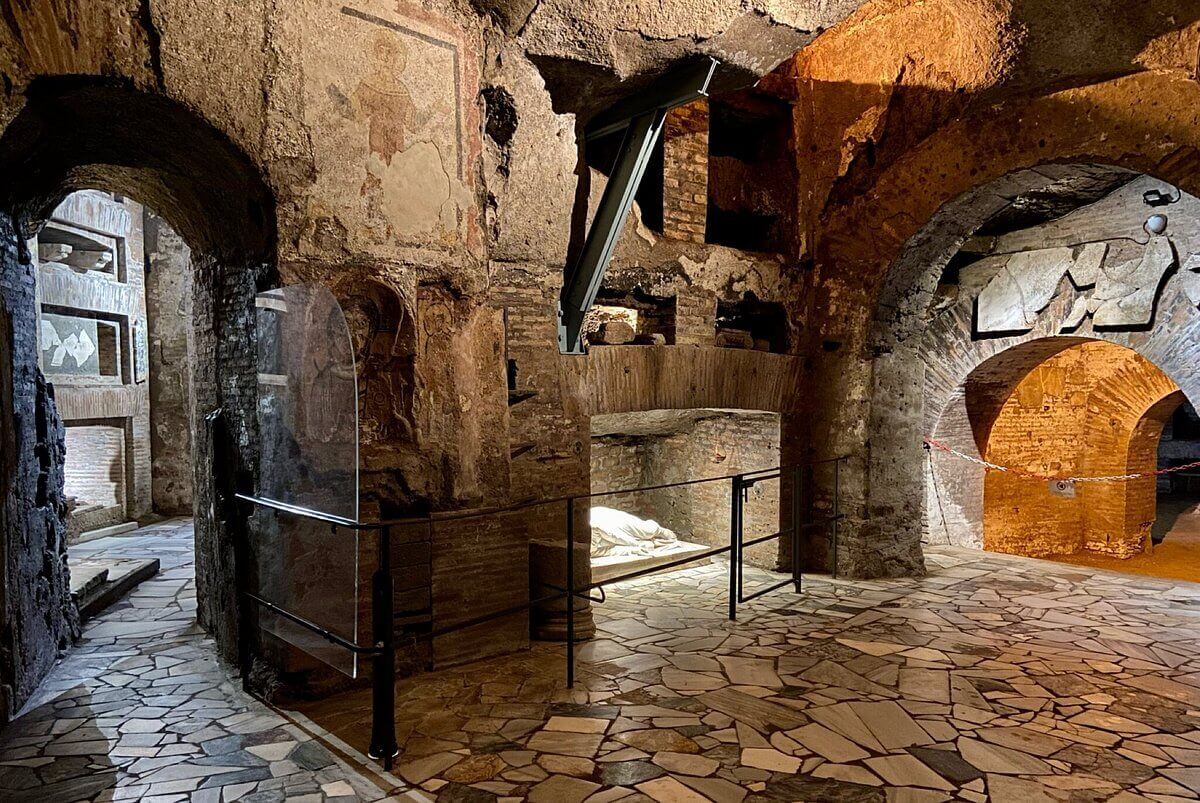
Beneath Rome’s sun-drenched streets lies a subterranean world of sacred history in two remarkable catacombs along Via Appia Antica.
The Catacombs of St. Callixtus house ancient Christian burial tunnels spanning 12 miles, while St. Sebastian’s Catacombs feature intricate frescoes and martyrs’ tombs.
These underground labyrinths offer glimpses into early Christian life and ancient Roman burial practices.
Aventine Keyhole: A Unique Spot for Sightseeing in Rome
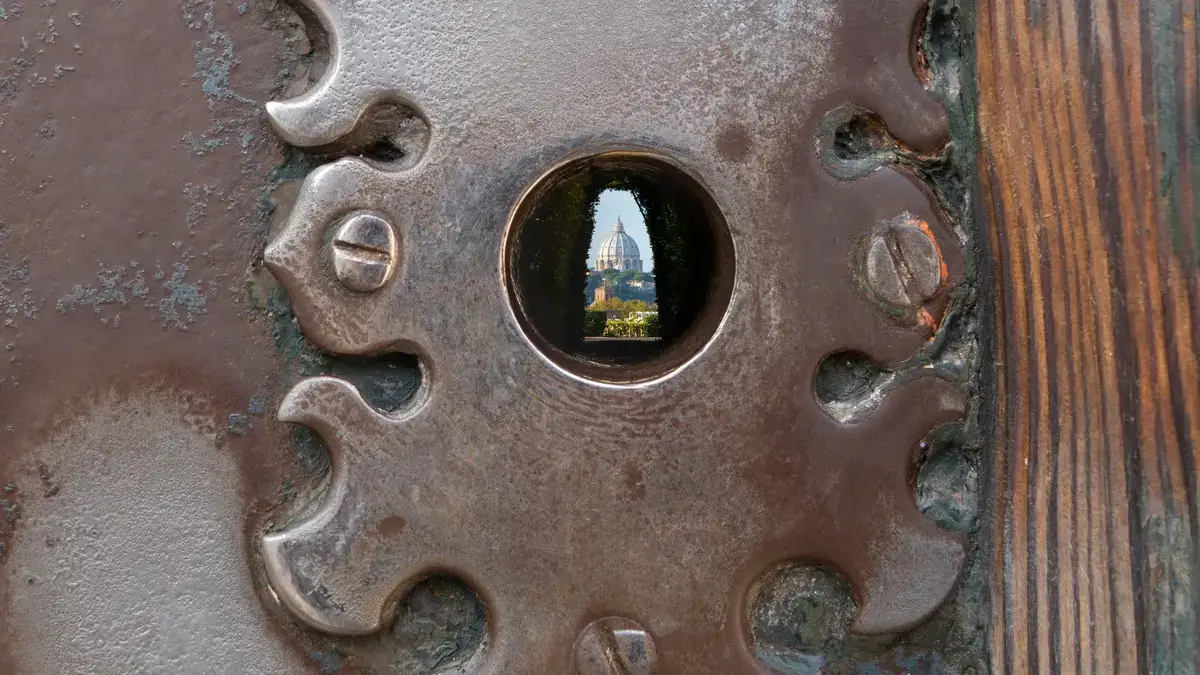
The Aventine Keyhole offers one of Rome’s most intriguing optical illusions – a perfectly framed view of St. Peter’s Basilica through a modest keyhole in an unassuming door.
Just steps away, the nearby Orange Garden (Giardino degli Aranci) provides a serene escape from the city’s bustle, where visitors can wander among fragrant citrus trees and medieval walls.
The combination of these hidden treasures on Aventine Hill creates an off-the-beaten-path experience that rewards curious travelers with both architectural wonder and tranquil moments.
Peeking Through the Famous Keyhole for a Surprising View
Perched atop Rome’s Aventine Hill lies a mysterious keyhole that offers one of the city’s most enchanting optical illusions.
Through this perfectly aligned aperture, visitors witness a masterpiece of architectural precision, where three sovereign states converge in a single view.
- St. Peter’s Basilica dome, perfectly framed by a manicured garden tunnel
- A glimpse through the Priory of the Knights of Malta’s domain
- The convergence of Italy, Vatican City, and the Sovereign Military Order of Malta
Strolling Through the Orange Garden for a Peaceful Escape
Just steps away from the famous Aventine Keyhole lies the enchanting Giardino degli Aranci, a tranquil orange grove perched on Rome’s Aventine Hill.
This hidden oasis offers visitors a peaceful retreat from the city’s bustling streets. The garden’s fragrant citrus trees, manicured pathways, and panoramic views of the Eternal City create an idyllic setting where travelers can escape the tourist crowds and savor Rome’s natural beauty.
Day Trips and Surrounding Places to Visit in Rome Italy
While Rome’s ancient heart captivates visitors, remarkable treasures await in the surrounding areas, including the archaeological marvel of Ostia Antica, Rome’s ancient seaport city.
The remarkably preserved ruins of Ostia Antica offer visitors a glimpse into daily Roman life through its intact streets, temples, and amphitheater, all without the crowds of central Rome.
Just east of the capital, Tivoli enchants with the Renaissance splendor of Villa d’Este‘s terraced gardens and fountains, alongside the architectural wonder of Emperor Hadrian’s sprawling villa complex.
Ostia Antica: A Well-Preserved Ancient Roman City Near Rome
Just 30 kilometers from Rome’s city center lies the remarkably preserved ancient port city of Ostia Antica, offering visitors a less crowded alternative to the Roman Forum.
The site’s well-preserved amphitheater, once hosting up to 4,000 spectators, stands as a tribute to Roman engineering and entertainment culture.
Intricate floor mosaics in the ancient baths and merchant shops reveal detailed scenes of daily Roman life, allowing visitors to wander through history without the overwhelming crowds found at Rome’s central archaeological sites.
Exploring Ruins Without the Crowds of the Forum
Located merely 30 kilometers from Rome’s city center lies Ostia Antica, an archaeological gem that rivals Pompeii in its preservation yet draws only a fraction of the crowds.
Visitors can wander freely through this ancient Roman port city, discovering its untold stories without battling tourist hordes.
- Ancient mosaic-adorned apartments and storefronts reveal daily Roman life
- Theater ruins host occasional summer performances under starlit skies
- Well-preserved thermal baths showcase sophisticated Roman engineering
Highlights: Amphitheater, Baths, and Mosaics
Ancient grandeur comes alive at Ostia Antica’s most impressive sites, where visitors can marvel at the remarkably intact 2nd-century amphitheater, explore intricate bath complexes, and study detailed floor mosaics that have withstood millennia.
The amphitheater’s curved seating tiers, the baths’ sophisticated heating systems, and the Forum of Corporations’ merchant mosaics offer glimpses into daily Roman life, each telling stories of commerce, leisure, and cultural sophistication.
Tivoli: Famous Buildings in Italy Just Outside of Rome
Located just 20 miles east of Rome, the historic town of Tivoli captivates visitors with two extraordinary UNESCO World Heritage sites: the enchanting Villa d’Este with its masterfully designed Renaissance gardens and the sprawling Villa Adriana, Emperor Hadrian’s opulent country estate.
The Villa d’Este’s cascading fountains, water features, and terraced gardens showcase the pinnacle of Italian garden design, while the vast ruins of Villa Adriana reflect the grandeur of ancient Roman architecture and imperial life.
These remarkable villas offer a perfect day trip from Rome, transporting visitors through centuries of Italian history and artistic achievement.
Villa d’Este and Its Stunning Renaissance Gardens
Perched on the slopes of Tivoli, the magnificent Villa d’Este stands as one of Italy’s most enchanting Renaissance treasures, mesmerizing visitors with its elaborate gardens and musical fountains.
This 16th-century masterpiece embodies the grandeur of Italian garden design, where cascading terraces and hydraulic marvels create a symphony of water and nature.
- Hundreds of fountains, including the iconic Fountain of the Organ, produce ethereal melodies
- Manicured Renaissance gardens feature geometric patterns and hidden grottos
- Frescoed halls within the villa showcase cardinal Ippolito II d’Este’s opulent lifestyle
Villa Adriana, the Lavish Retreat of Emperor Hadrian
Emperor Hadrian’s sprawling retreat, Villa Adriana, unfolds across 296 acres of Tivoli countryside as one of the most ambitious architectural complexes from the Roman Empire.
This UNESCO World Heritage site features recreations of architectural marvels Hadrian encountered during his travels, including Egyptian temples, Greek theaters, and Roman baths.
Ancient columns, marble remnants, and serene pools evoke the sanctuary’s former grandeur.
Best Places to Go in Rome for Food and Shopping
Rome’s lively culinary scene comes alive at the historic Testaccio Market, where locals browse fresh produce, artisanal cheeses, and traditional Roman street food amid the animated calls of vendors.
The bustling Campo de’ Fiori, a picturesque square dating back to medieval times, transforms each morning into an open-air marketplace filled with colorful flowers, fresh vegetables, and aromatic spices.
These authentic Roman marketplaces offer visitors a genuine taste of local life, where traditional recipes and age-old shopping customs blend seamlessly with modern Roman culture.
Testaccio Market: A Must-See in Rome for Food Lovers
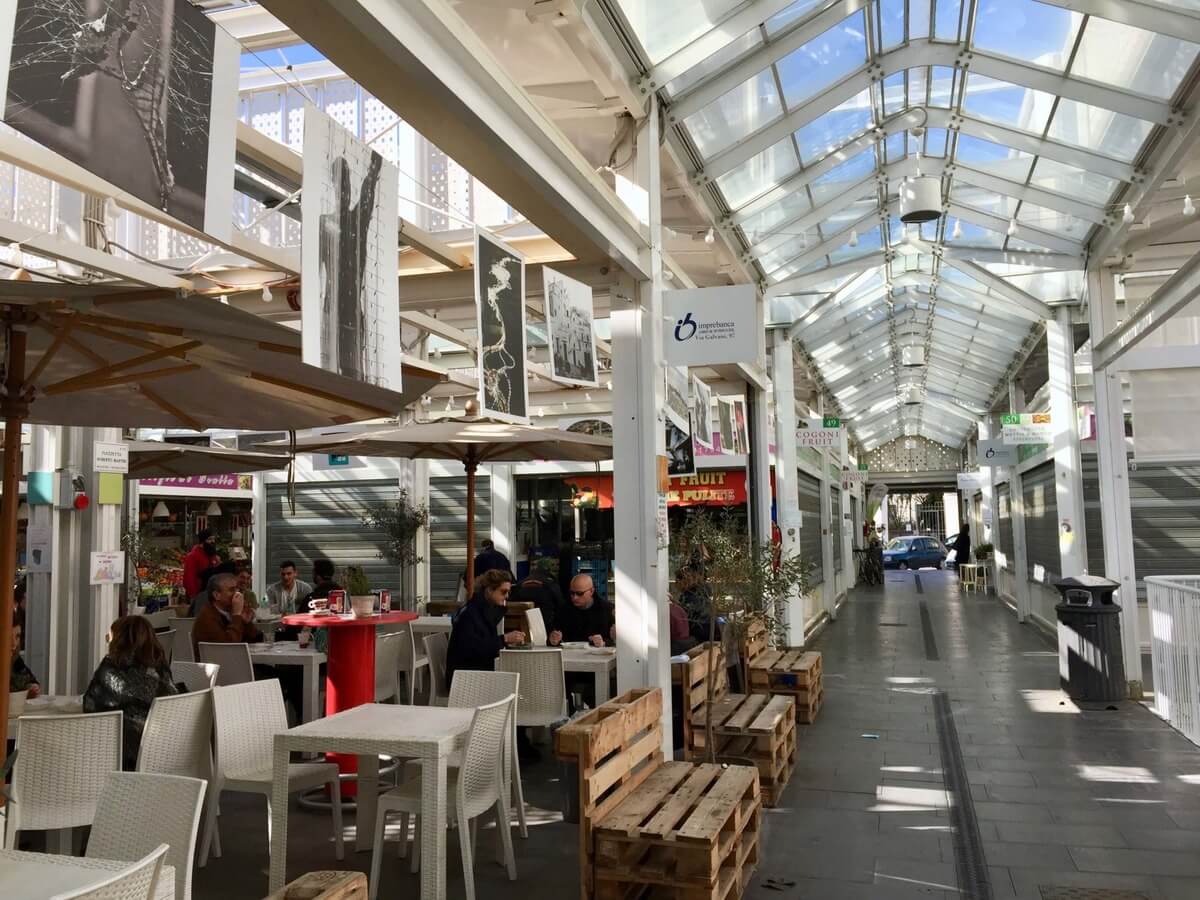
Testaccio Market stands as Rome’s premier destination for authentic local cuisine, where visitors can sample everything from handmade pasta to traditional Roman tripe among its bustling stalls.
The market’s vendors offer an affordable array of street food classics like suppli (rice balls) and pizza al taglio (pizza by the slice), alongside seasonal produce from nearby farms.
Food enthusiasts can embrace the genuine flavors of Roman gastronomy while watching locals navigate their daily shopping routines, creating an immersive cultural experience away from tourist-heavy spots.
Sampling Local Delicacies and Traditional Roman Dishes
Food enthusiasts seeking an authentic culinary experience should make their way to Testaccio Market, a lively gastronomic hub where local vendors have been showcasing Rome’s finest ingredients and traditional dishes for generations.
- Savor the iconic Roman pasta dishes like Carbonara and Cacio e Pepe at family-run stalls.
- Sample freshly sliced Prosciutto and local cheeses from artisanal vendors.
- Experience the beloved Roman street food tradition of Supplì, crispy rice balls filled with melted mozzarella.
Finding Affordable Street Food and Fresh Produce
While exploring the enchanting streets of Italy’s capital, budget-conscious travelers can discover an abundance of wallet-friendly culinary treasures at the historic Testaccio Market.
Local vendors offer everything from freshly baked pizza al taglio and supplì to seasonal fruits and vegetables.
This authentic Roman marketplace embodies the city’s lively food culture, allowing visitors to savor authentic flavors without straining their travel budget.
Campo de’ Fiori: A Famous Square for Markets and Cafés
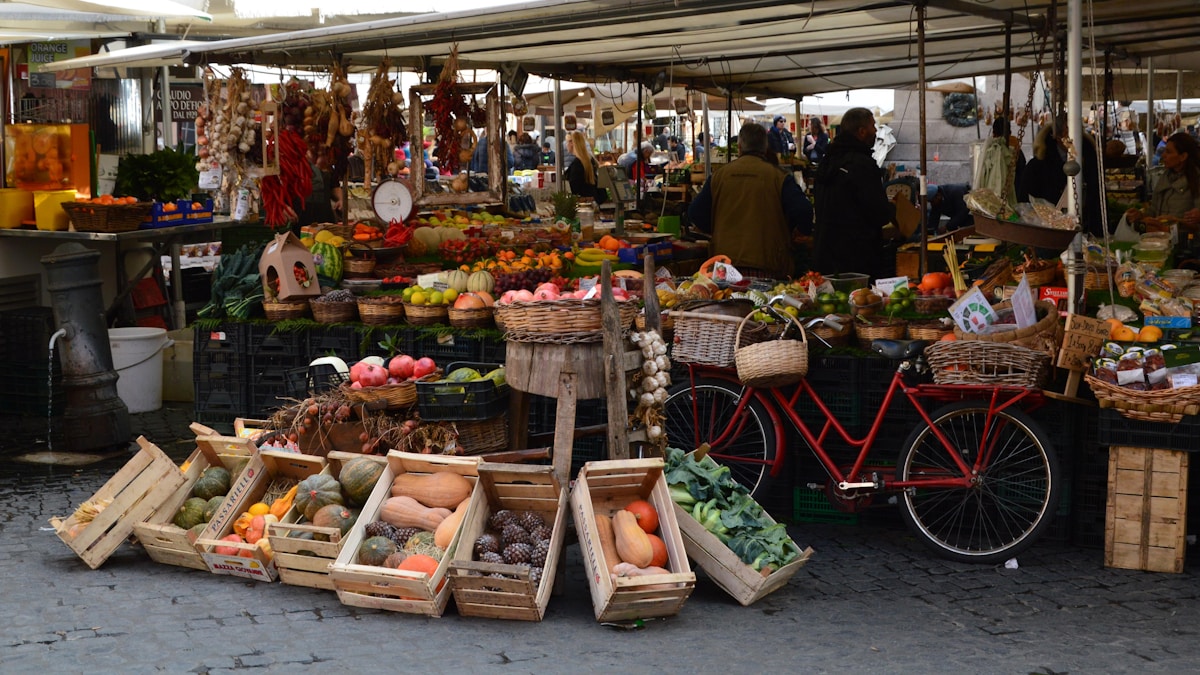
Campo de’ Fiori transforms from a lively morning marketplace, where locals gather for fresh produce and flowers, into a bustling evening hotspot filled with outdoor cafés and wine bars.
Vendors display colorful arrays of regional specialties, from traditional pasta to artisanal olive oils, while skilled craftsmen offer authentic Italian souvenirs and handmade goods.
As the sun sets, the historic square comes alive with the animated chatter of diners enjoying traditional Roman cuisine under the watchful gaze of the brooding statue of Giordano Bruno.
Visiting the Daily Market for Fresh Ingredients and Souvenirs
Located in the heart of Rome’s historic center, the bustling Campo de’ Fiori market transforms each morning into a lively tapestry of colors, aromas, and local culture.
Merchants offer Italy’s finest ingredients while artisans display handcrafted goods, creating an authentic Roman shopping experience.
- Fresh produce, herbs, and seasonal vegetables from local farms
- Handmade pasta, regional olive oils, and aromatic spices
- Artisanal crafts, leather goods, and traditional souvenirs
Enjoying the Nightlife and Outdoor Dining Scene
As twilight descends over Campo de’ Fiori, the historic square transforms from a bustling marketplace into a sophisticated dining and entertainment destination.
Candlelit tables spill onto cobblestone streets while trattorias serve classic Roman pasta dishes and local wines.
Also read: A Complete Guide to Nightlife in Rome
Visitors mingle with residents at outdoor bars, enjoying aperitivos and live music beneath twinkling string lights, embodying Rome’s lively nocturnal spirit.
Tips for Planning Rome Sightseeing and Tours in Rome Italy
Exploring Rome’s iconic landmarks requires strategic planning to maximize time and avoid the notoriously long queues at major attractions.
Savvy travelers can enhance their experience by purchasing Roma Pass or Omnia Vatican cards, which combine public transportation access with skip-the-line privileges at key sites like the Colosseum and Vatican Museums.
The city’s vast historical treasures unfold most effectively through a mix of guided tours for complex sites like the Roman Forum and self-guided wandering through atmospheric neighborhoods like Trastevere.
Best Ways to Explore Rome Landmarks and Attractions
Rome offers visitors two distinct ways to experience its ancient wonders: self-guided exploration that allows for spontaneous discoveries and intimate moments with history, or expert-led tours that reveal hidden stories and context behind the eternal city’s iconic sites.
Maneuvering through Rome’s most popular attractions requires strategic timing, with early morning or evening visits helping travelers dodge the crushing midday crowds at landmarks like the Colosseum and Vatican Museums.
The choice between independent wandering and guided experiences often depends on one’s desire for historical depth versus freedom to linger, though both approaches reward visitors with Rome’s timeless magic.
Self-Guided Walks vs. Guided Tours in Rome Italy
When planning a visit to the Eternal City, travelers face an important choice between self-guided exploration and organized tours – each offering distinct advantages for experiencing Rome’s archaeological wonders, artistic masterpieces, and hidden gems.
- Self-guided walks allow spontaneous discoveries through cobblestone streets and intimate neighborhoods.
- Guided tours provide expert historical context and skip-the-line privileges at major sites.
- Evening small-group tours offer unique perspectives of illuminated monuments without daytime crowds.
Tips for Avoiding Crowds at Popular Rome Tourist Attractions
How can savvy travelers experience the majesty of Rome’s iconic landmarks while avoiding the crushing crowds that often diminish their splendor?
Visiting major sites during early morning hours or late evenings offers tranquil exploration opportunities.
Booking skip-the-line tickets, entering through lesser-known side entrances, and exploring attractions during off-peak seasons (November-March) help bypass long queues.
Strategic timing allows for intimate encounters with Rome’s treasures.
Rome Sightseeing Passes and Skip-the-Line Options
Rome’s popular attractions often come with lengthy queues and substantial entry fees, making sightseeing passes an invaluable tool for the savvy traveler.
The Roma Pass and Omnia Vatican & Rome Card offer varying combinations of free entry, discounted admission, and skip-the-line privileges at major landmarks, while also including public transportation options in Rome.
Selecting the right pass depends on one’s intended sites, with some passes focusing on ancient ruins and others emphasizing Vatican attractions, allowing visitors to tailor their experience to their specific interests and timeline.
Saving Money on Entry Fees and Transportation
To maximize the magic of Rome without draining your wallet, savvy travelers can take advantage of several money-saving options for attractions and transportation.
The Eternal City offers numerous ways to explore its treasures economically while maintaining the authentic experience.
- Roma Pass includes free public transportation and entry to select museums
- Visit state museums on free first Sundays of each month
- Walk between closely clustered attractions in the historic center
Choosing the Right Pass for Your Itinerary and Interests
When planning multiple attractions in the Eternal City, selecting the right sightseeing pass can make the difference between a seamless journey and hours spent waiting in lines.
The Roma Pass offers entry to top sites and public transport, while the Omnia Card includes Vatican access.
The Archaeologia Card focuses on ancient ruins, perfect for history enthusiasts exploring Rome’s classical heritage.
So What to See in Rome for Your Next Trip?
Rome’s enduring appeal invites visitors to explore the historical layers beneath their feet, with each area revealing hidden stories.
From the distant sounds of gladiators in the Colosseum to the tranquil ambiance of the Sistine Chapel, the city casts a fascinating charm.
As the sun sets behind St. Peter’s dome, it becomes clear that Rome not only preserves its history but also revitalizes it, encouraging repeated visits to its ageless streets.
Frequently Asked Questions (FAQs)
What is the number 1 must see in Rome?
The Colosseum stands as Rome’s most impressive monument and a must-see attraction for anyone visiting the Eternal City.
Known in ancient times as the Flavian Amphitheatre, this colossal structure could hold up to 50,000 spectators and is considered one of the seven modern wonders of the world. Construction on the Colosseum began around 70 AD under Emperor Vespasian.
Inside the Colosseum, visitors can explore the stands, the arena, and the underground spaces of what was once the largest Roman amphitheater. During its prime, the Colosseum hosted gladiatorial battles, public executions, and exotic animal hunts.
With its rich history and imposing architecture, the Colosseum remains a powerful symbol of Roman wealth and power, drawing millions of visitors each year.
What are the top 5 places in Rome?
If you’re planning a trip to Rome, there are numerous must-see spots. Here are five of the most popular attractions that should be on your list:
- Colosseum: As Rome’s most impressive monument, the Colosseum is a testament to the architectural skills of the ancient Roman people. It once hosted gladiatorial battles and public spectacles.
- Trevi Fountain: The most beautiful and spectacular fountain in Rome, the Trevi Fountain attracts millions of visitors each year. Legend says that tossing a coin into the fountain ensures a return trip to Rome.
- Pantheon: This architectural gem is the best-preserved building from ancient Rome. It is a masterpiece of Roman architecture and a must-see for its innovative design.
- Roman Forum: The heart of ancient Rome, the Roman Forum was the center of political and social activity. Wander through the ruins to imagine the power that once flowed through these halls.
- Vatican Museums & Sistine Chapel: The Vatican Museums house an enormous art collection amassed by popes over centuries, and the Sistine Chapel is a highlight for many, featuring Michelangelo’s famous frescoes.

